People usually pull weeds from their yards. But what they should really be doing, if they take a closer look, is harvest them.
There’s likely a veritable buffet of common weeds and invasive plants out there that are not only edible, but also delicious and nutritious: roots, leaves, stems, flowers and all. And I’m guessing that a lot of them end up in the compost pile, even though they’re free for the picking.

But let’s reframe what we commonly consider a weed and call it, perhaps, a wild salad green. Because as you’ll learn below, most of the typical weeds you see in your yard are actually European or Asian migrants that traveled with settlers and once were (or still are) staple vegetables in their native lands.
Somehow they’ve earned the inglorious label of being a weed, but as any gardener knows, a weed is simply a plant that’s growing where it’s not supposed to. (“Weedy” volunteer tomatoes and squashes, anyone?) And some of them are so good that I’ve actually cultivated them (on purpose) in my own garden.
Spring and early summer are when these weeds are at their best: fresh, tender, and succulent thanks to cooler nights. If you happen to find one of them in your yard, definitely pull the whole plant—that way you get your weeding done while harvesting your next meal at the same time.
Disclosure: If you shop from my article or make a purchase through one of my links, I may receive commissions on some of the products I recommend.
1. Bittercress (Cardamine sp.)
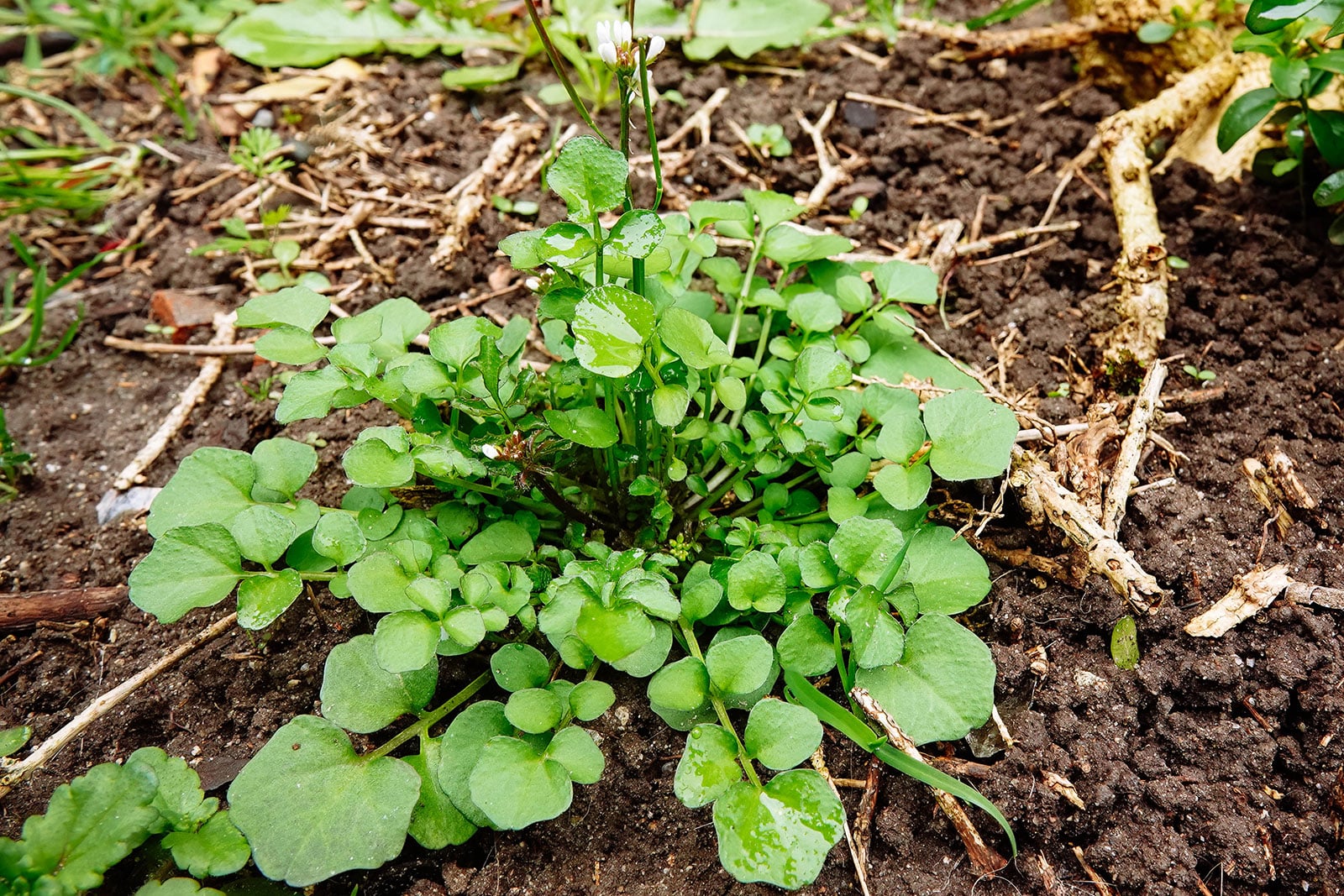
Also known as toothworths, the bittercresses belong to a large genus scientifically known as Cardamine. Many of the species, which can be found everywhere but in the coldest regions of the world, are edible.
The two species of bittercress most commonly used as food are Cardamine hirsuta (hairy bittercress) and C. oligosperma (little western bittercress). You can grow these hardy plants in your garden in USDA zones 3 to 9 and harvest the leaves pretty much year-round, or pick them in shaded places like forest floors.
You can use bittercress (which has the typical peppery flavor of the mustard family and isn’t actually bitter at all) to give a kick to stir-fries, pesto, or even sandwiches.
2. Burdock (Arctium sp.)
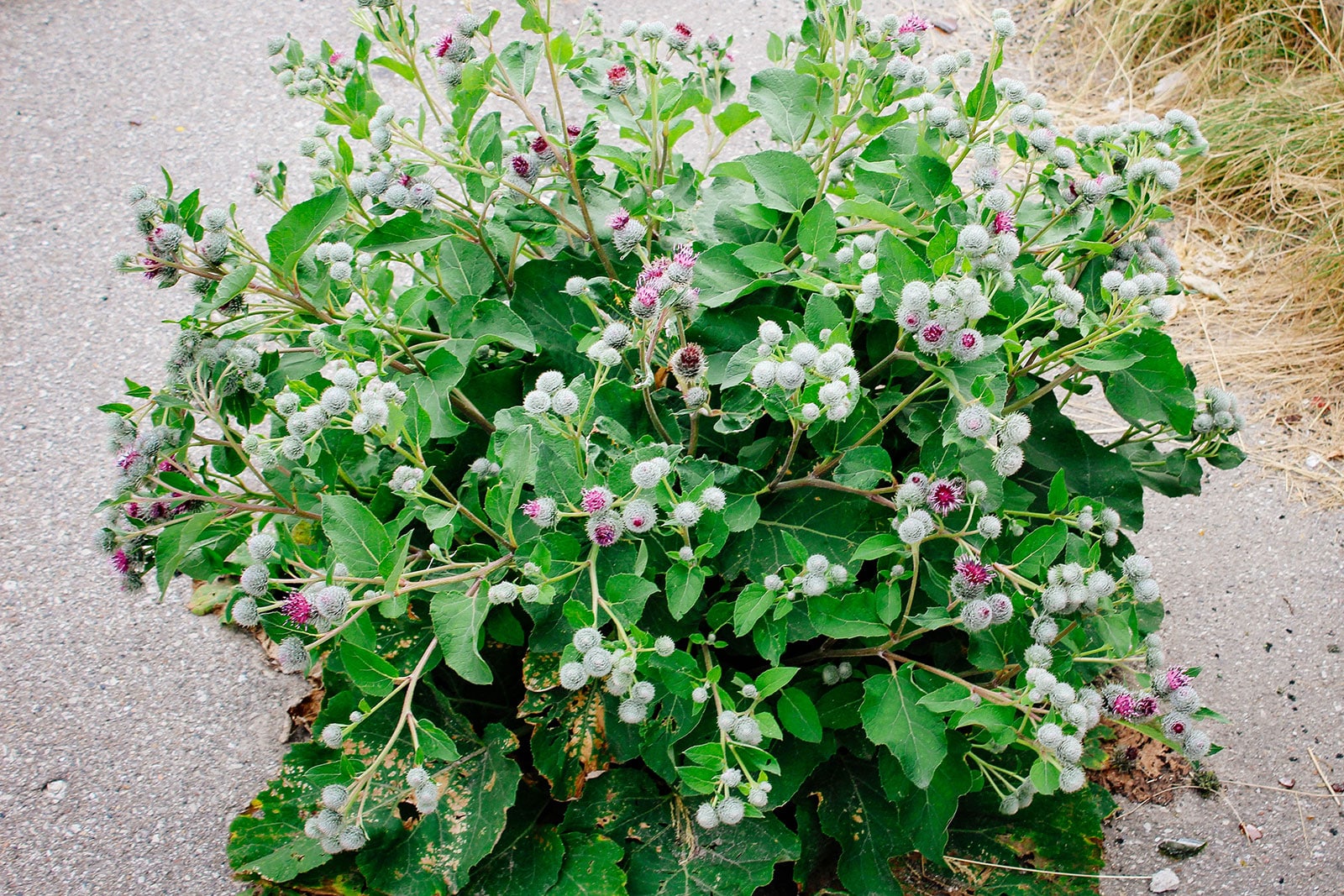
Although burdock (genus Arctium) isn’t native to the Americas, there’s a good chance you’ve come across it before. Anyone who hikes a lot is likely to have gotten the flowerheads, called burrs, stuck to their clothes or gear at some point!

Aside from being a regular roadside sight, burdock is also edible. It’s not very popular in the Western world, but the root in particular is commonly eaten in countries like Japan (where it’s known as gobo), China, and Korea. Its crisp texture and mild flavor (similar to artichoke) make it a great choice for stir-fries or stews. It can also be pickled.
You can find or grow burdock between USDA zones 3 to 10. It’s very hardy and doesn’t care much about things like light or soil; it’ll thrive pretty much anywhere. (I actually grew Japanese edible burdock as a root crop one year in my Southern California garden! Let’s just say… harvesting the 2-foot-long root was quite the adventure.)
Did you know?
Burdock has been used as a medicinal herb both in Europe and in Chinese traditional medicine.
3. Chickweed (Stellaria media)
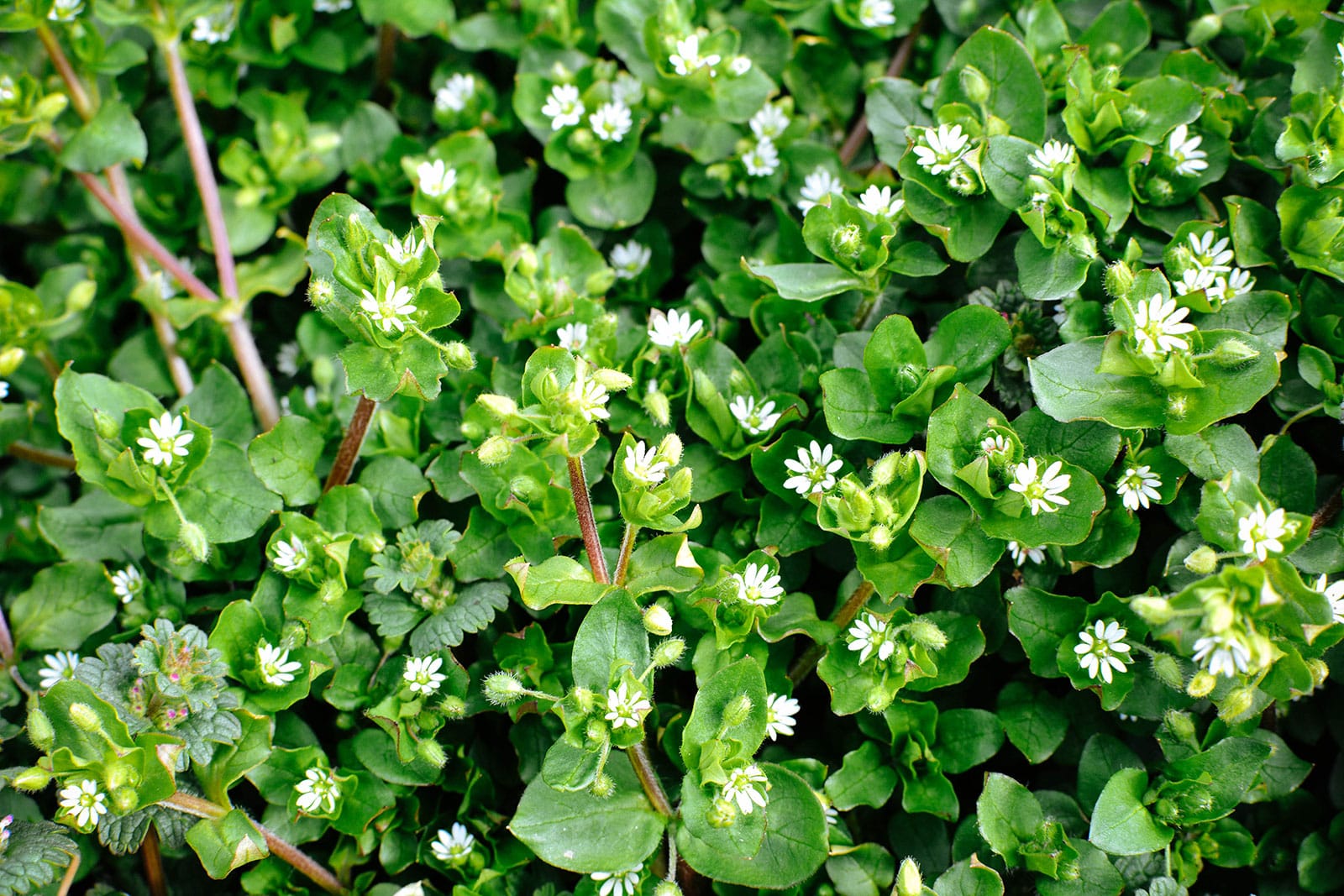
Another weed that’s originally from Europe but has managed to adapt perfectly to life here in the Americas is chickweed (Stellaria media), a common sight in gardens and roadsides. Its small leaves, tiny white flowers, and hairy seed pods make it easy to recognize.
Like burdock, chickweed is commonly eaten in some Asian countries, like Japan—they’re a bit better at recognizing edible weeds there than we are here. It has a mild, slightly grassy flavor that works well in salads, green smoothies, soups, and much more. It’s also supposed to have all sorts of medicinal properties.
You can grow chickweed in your garden in zones 3 to 9. Like most of the other weeds on this list, it’s not very particular about soil or sun as long as things don’t get too dry. In many regions, it’ll stay green year-round.
Did you know?
There are actually a bunch of different plant species commonly referred to as chickweed. That’s why scientific names and photo references come in handy!
4. Cleavers (Galium aparine)
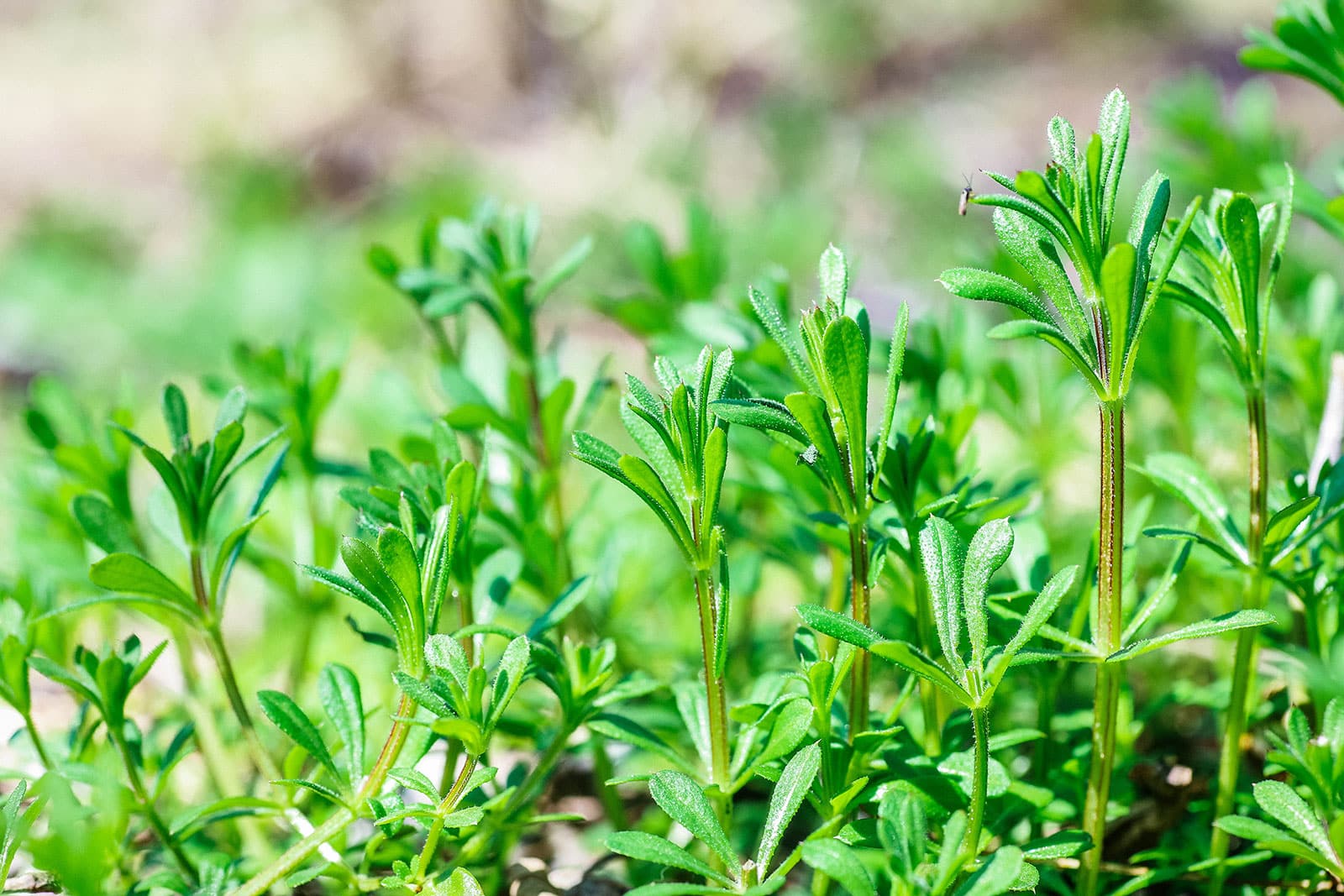
If you thought the previously mentioned burdock plant was prone to getting stuck to your clothing, try cleavers (also known as catchweed, bedstraw, and rather appropriately, the velcro plant)! Although this weed can be annoying, it’s also very useful.
Native to Eurasia and North Africa but naturalized in the US, cleavers have been a staple in folk medicine for many years and can be used to relieve skin irritation and light burns. Aside from that, they’re also edible, with the young shoots working well in salads, smoothies, or as a garnish for various dishes. You can also use the leaves and stems to make tea.

Once cleavers flower, they become a bit too fibrous to eat. This doesn’t mean you can’t use them anymore, though. Once the fruits develop, they can be dried and roasted for use as a coffee substitute.
You can grow or forage cleavers in USDA zones 3 to 9. They like moist but well-draining soil and plenty of sun.
5. Clover (Trifolium sp.)
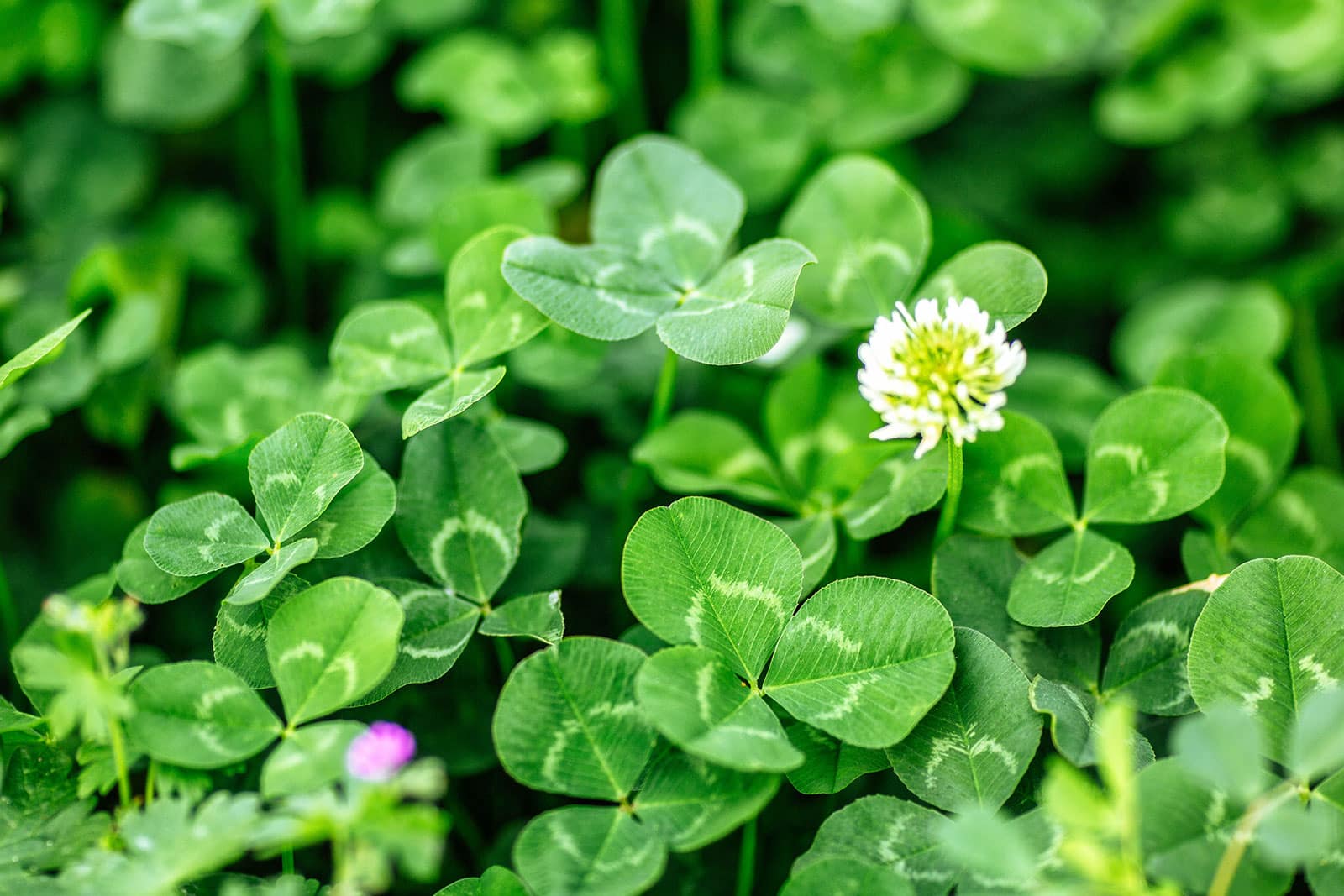
Yep, clovers aren’t just there to nourish your soil and bring you good luck. The most common species in the genus Trifolium—T. repens (white clover) and T. pratense (red clover)—have edible leaves and flowers. They taste mild and slightly sweet, making them perfect for salads, smoothies, soups, and to use as a garnish.
Read more: You’re already growing these vegetables and didn’t know you could eat them
That’s not all, though. You can also harvest and dry clover flowers to make tea or jellies. Even the seeds have their uses: they’re perfect for sprouting and using as you would alfalfa.
Did you know?
Bees love clover. It’s one of the main food sources for honeybees, and clover honey is delicious.
Clover can naturally be found throughout Europe, Asia, the Americas, and parts of Africa. It’s easy to find patches to forage in meadows and fields, but you can also grow them yourself. Most species do well in zones 3 to 9 and you can grow them as an ornamental plant, edible plant, or cover crop.
Where to buy
Clover
6. Curly dock (Rumex crispus)
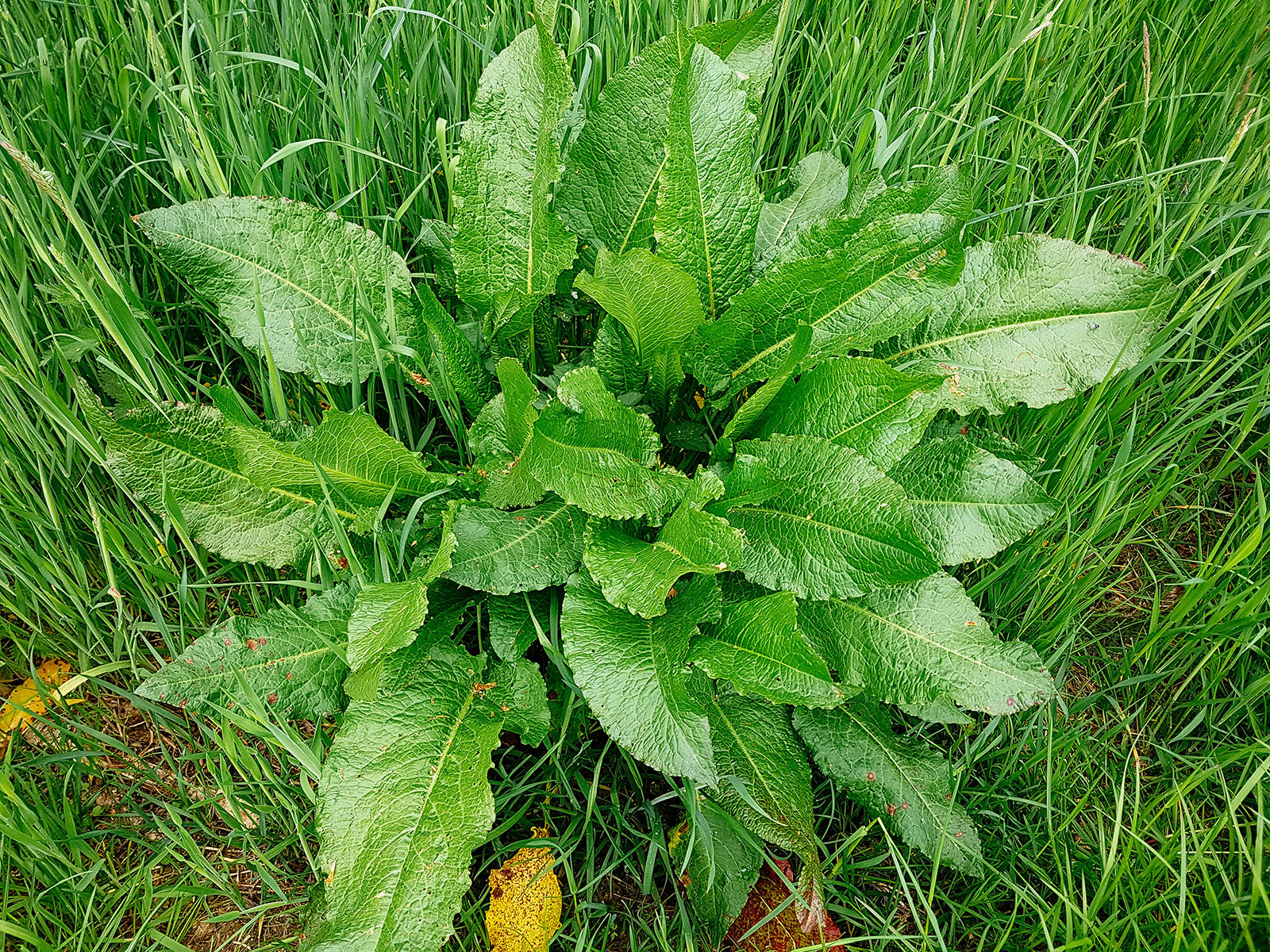
Native to Europe and parts of Asia, curly dock (Rumex crispus) has also been introduced to North America and is in fact considered a noxious weed in some states. So I don’t necessarily recommend growing it in your garden, but it’s definitely a species to keep an eye out for if you like foraging.
Young curly dock leaves can be added to salads or used in soups. Because they’re high in oxalic acid you shouldn’t eat too much of them, but they’re pretty palatable: tart with a hint of bitterness. If you don’t love the bitter note, cook them in something like a stew in lieu of spinach.
You can find curly dock in (roughly) zones 4 to 9 in a variety of habitats. Try fields and riverbanks. The species is also common along roadsides, but unfortunately, the risk of contamination means foraging there is not a great idea.
(There’s another dock species, commonly called bloody dock or red-veined sorrel, that can be grown as a garden vegetable and shares a similar flavor profile as curly dock.)
7. Dandelion (Taraxacum sp.)
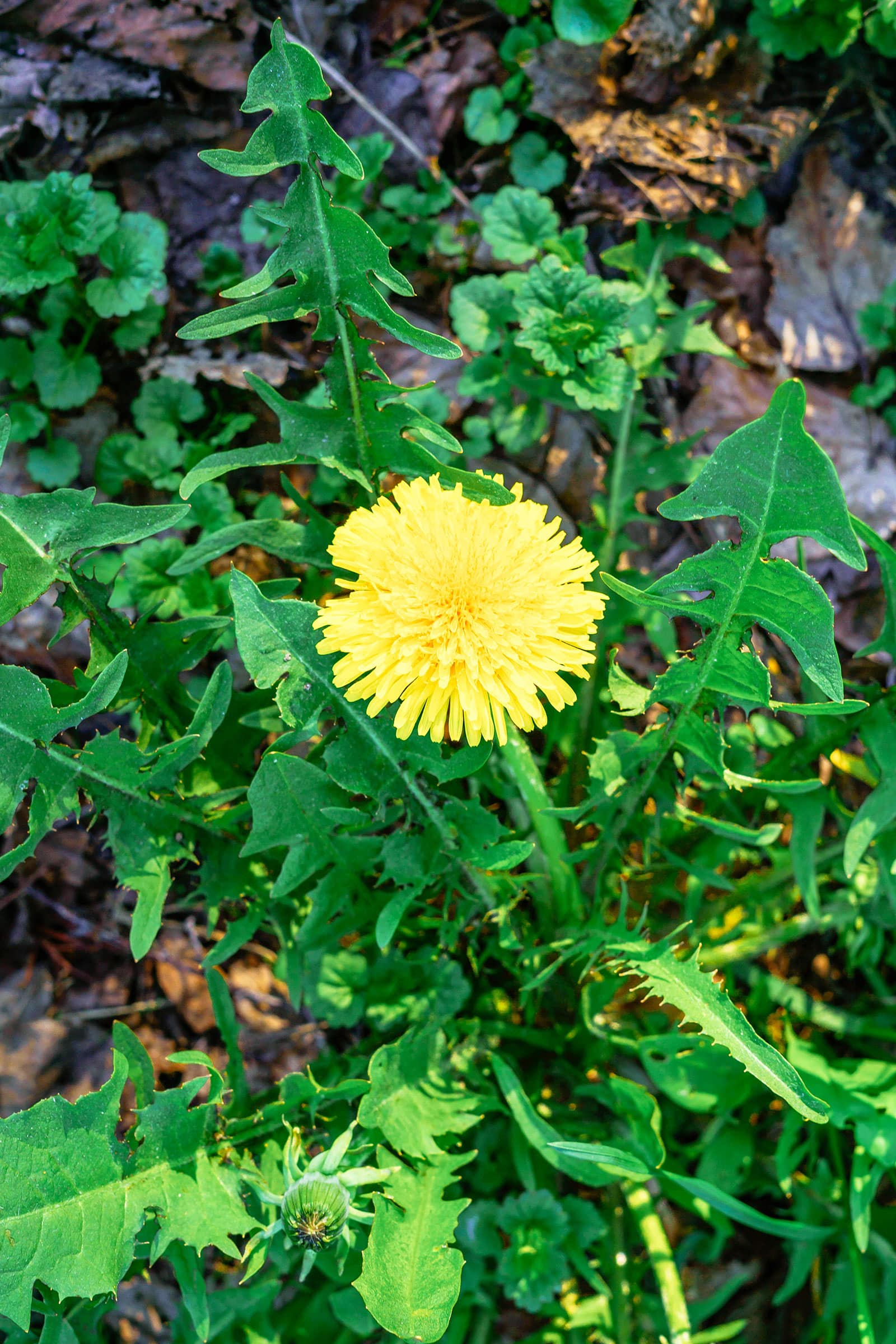
The humble dandelion is one of the most universally hated weeds of lawn owners, but does it actually deserve its bad reputation? I say nay! The genus Taraxacum is actually incredibly useful, not to mention delicious. (It’s crazy to think some grocery stores actually sell this! Hello, I’ve got dozens of them in my lawn and they’re all free, suckers!)
The entirety of the dandelion is edible (although I wouldn’t necessarily munch on the fuzzy seed parachutes):
- Leaves: Similar to arugula, with the young leaves tasting best. Great for salads, smoothies, stir-fries, stews, and more.
- Flowers: Sweet and floral. Use in fritters, as a garnish, to make jelly, or even to produce dandelion wine.
- Roots: Woody, slightly nutty and bitter when roasted. Can be used to brew a caffeine-free coffee substitute.
Dandelions are easy to find if you know where to forage them. Parks and yards are usually full of the cheerful yellow flowers, as are fields and forest edges.
If they haven’t popped up in your garden by themselves, you can also grow dandelions in zones 3 to 9. They’ll grow in pretty much any soil type and just need plenty of light and regular watering to thrive. I personally grow pink dandelions, a variety that’s less bitter than the common yellow type.
Get the PDF
Want to download this article with no ads?
You can get this entire article emailed to you as a PDF ebook to read at your convenience! Simply save it to your device or print it out for easy reference.
8. Garlic mustard (Alliaria petiolata)
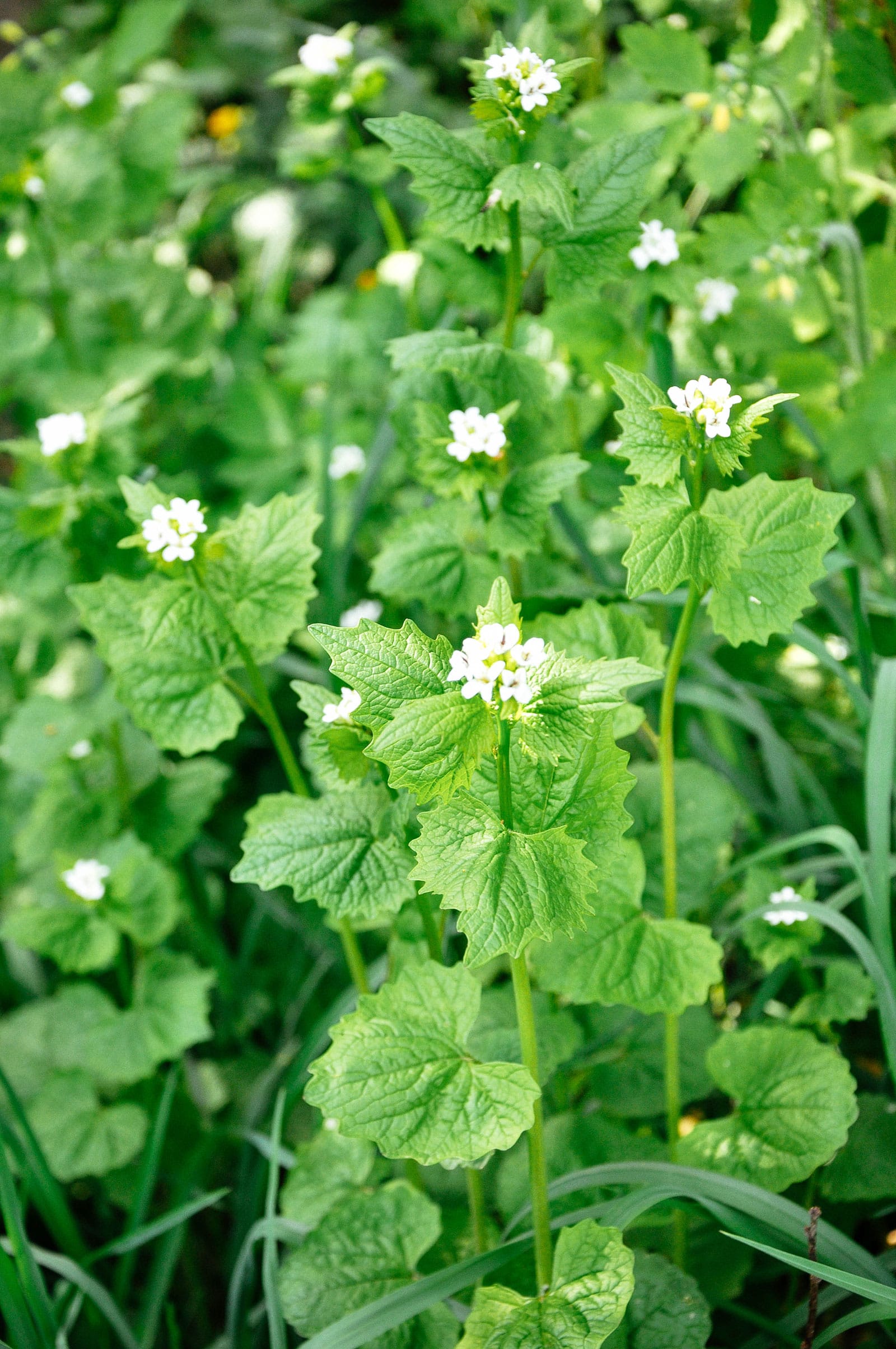
Like curly dock, garlic mustard (Alliaria petiolata) is an incredibly invasive noxious weed, but also delicious. Originally found in Eurasia and North Africa, it was introduced in North America in the 1800s as a food and for use in folk medicine. Unfortunately, things didn’t work out very well, and the species is now a threat to local biodiversity.
Although garlic mustard is toxic to some native caterpillars, the same luckily doesn’t go for us humans. Although I don’t recommend growing this one in your garden due to its invasive nature, it’s easy to find in hedgerows, along forest trails, and in other slightly shaded spots. As you forage, be sure to remove the whole plant (including the roots) to help out your local ecosystem.
Garlic mustard really does taste like garlic and mustard. You can use the leaves in salads, pesto, stir-fries, and soups. The stems can be pickled, the seeds can be used in lieu of mustard seeds, and the roots can replace horseradish as a condiment. Such a damaging plant, but so versatile!
Did you know?
The genus name Alliaria is a reference to the Alliums (onions and garlic), but garlic mustard actually belongs to the mustard family.
9. Henbit (Lamium amplexicaule)
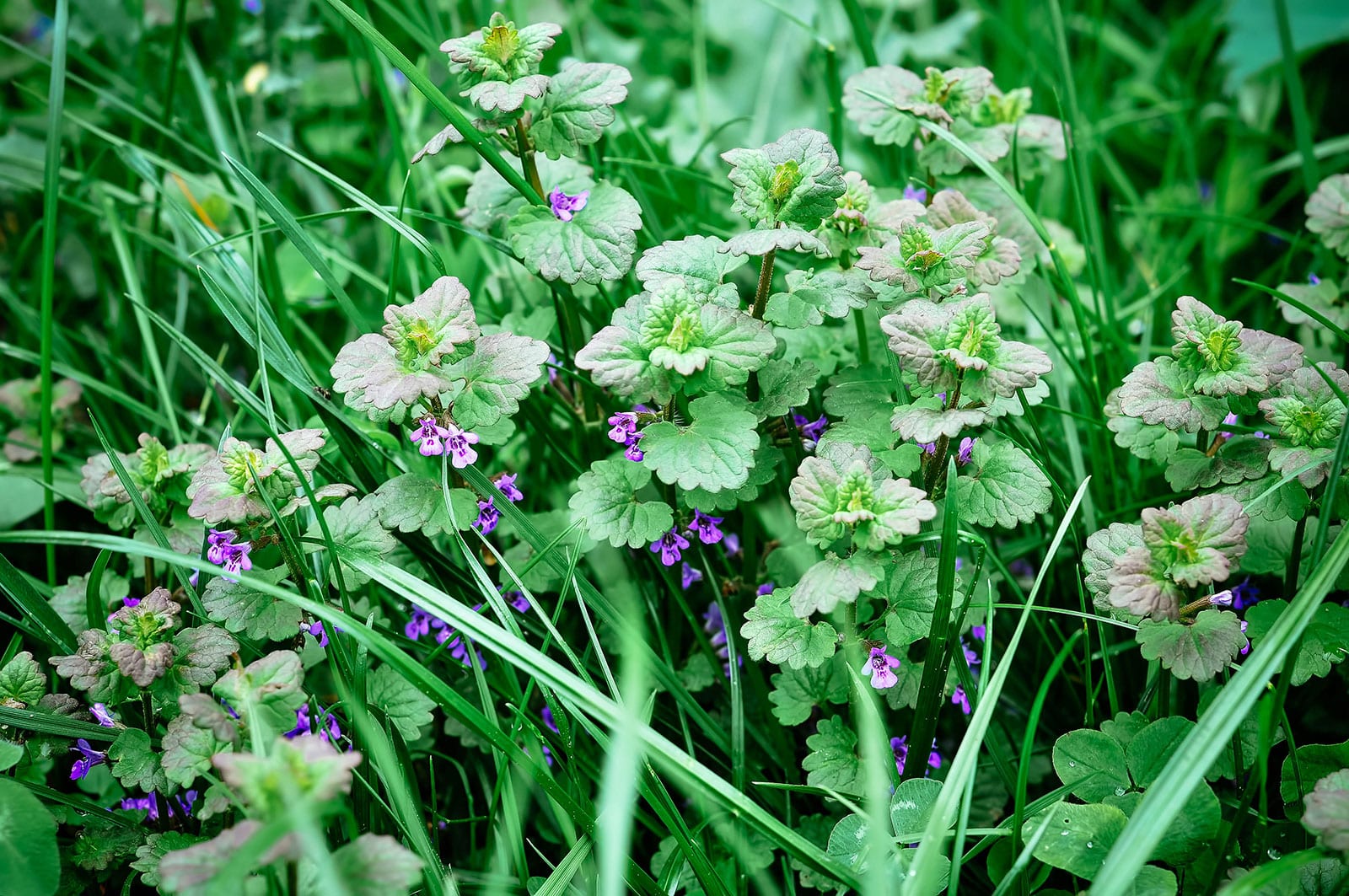
Another species that isn’t naturally found in the Americas but has made its way over here is henbit, a species of dead-nettle. Although its jagged leaves look similar to stinging nettles, henbit is completely harmless. It’s not considered damaging to ecosystems like some of the other weeds on this list, and its pretty purple flowers are highly attractive to bees.
Related: Plant these flowers to attract more bees to your garden
Henbit is also useful for us humans. It’s one of the more decorative weeds, and it’s also tasty. Use the leaves, which taste mild and slightly peppery, in salads and smoothies. You can also dry them for tea. The flowers are perfect to use as a garnish. I love how they look in cocktails!
Henbit is not as aggressive as many other weeds, but I’d still grow it in a container just in case. You should be able to get it to thrive in zones 3 to 9 without much trouble, or try looking for it along farmers’ fields, around forest edges, and in cultivated zones like parks.
10. Japanese knotweed (Reynoutria japonica)

We’ve gone from a highly damaging invasive species to a relatively innocent one… now, let’s circle back to another extremely problematic weed that also happens to be edible (and quite delectable). As its name suggests, Japanese knotweed is naturally found in East Asia, but it has made its way over to Europe and North America and is quickly wreaking havoc.
Now found in the majority of US states, Japanese knotweed is extremely vigorous, forming dense bushes that quickly crowd out native species. This affects things like erosion control and threatens ecosystems. The plant can also cause damage to buildings. Removing it is very difficult and a huge drain on resources.
Unfortunately, we foragers can’t do much, as pulling Japanese knotweed out by the root is not very effective. Still, it’s worth seeking it out: the young shoots are delightfully tart and can be used like rhubarb. You’ll want to avoid the leaves and older stalks, however, as those contain a compound that can cause diarrhea (it’s called emodin and is actually used in some laxatives).
11. Lamb’s quarters (Chenopodium album)
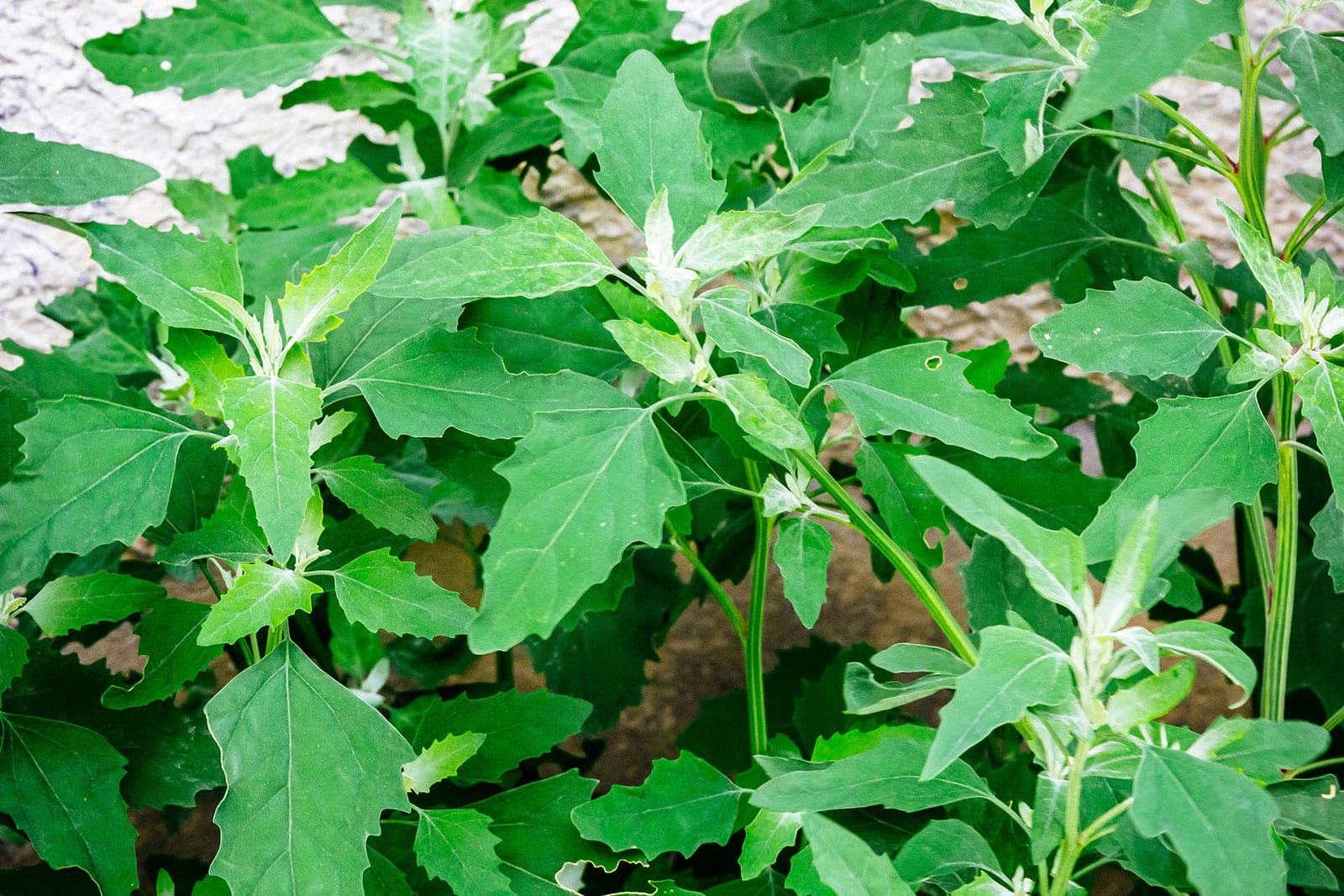
Also known as goosefoot, lamb’s quarters is a bit of a divisive species. Likely originating in Eurasia, it has since spread to pretty much every corner of the world, including North America. Most folks consider it a weed, but in Nepal and parts of India, it’s actually grown purposely as a food crop.
So which is it? Well, this is a species that tends to pop up in disturbed soil, typical of weeds, and it can quickly overtake areas thanks to its vigorous growth. That being said, it’s also a tasty, mild green and can be used wherever you’d normally use spinach. Think of it as a free salad green that happens to be very heat-tolerant! The seeds are also edible; lamb’s quarters is very closely related to quinoa, after all.
You can grow lamb’s quarters in a container in zones 3 to 9. It’s an annual plant, but its seeds are easy to collect and save for the next year. You can also find this plant while foraging around agricultural fields and similar areas.
12. Mallow (Malva sp.)
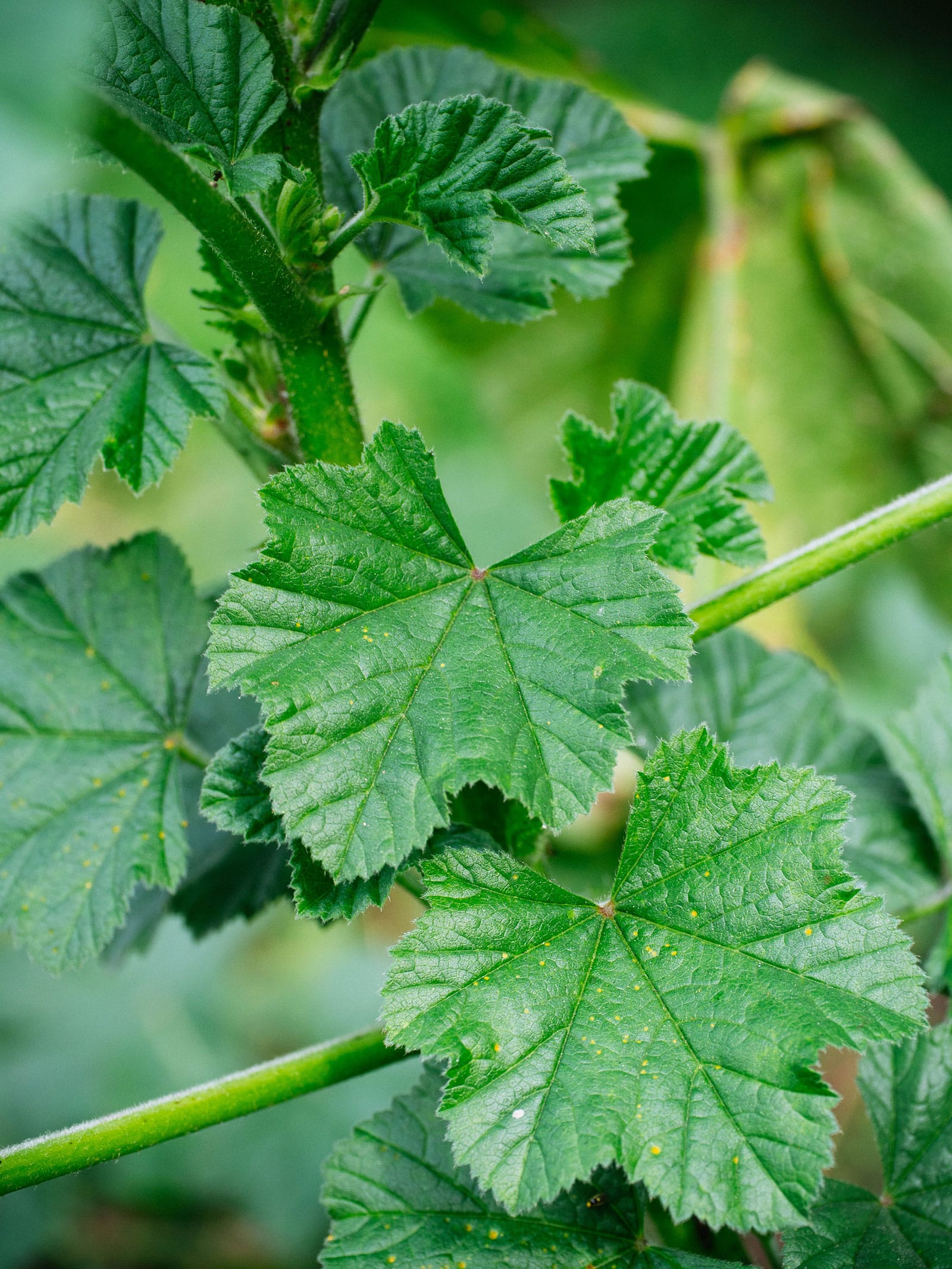
I personally love mallow and its little pinkish-purple flowers, but it’s true that this vigorous species is often considered to be a weed. It’s not native to the US, naturally occurring in Eurasia and parts of Africa, but it’s a frequent sight here in fields, by the roadside and even in urban areas, where all it needs to thrive is a nice crack in the sidewalk.
If mallow pops up in your garden, don’t despair. Just eat it—it’s nutritious! The leaves can be used in salads, and since they contain a natural thickening agent similar to that of okra, they’re also great for soups and stews. You can use the flowers as a garnish or to make tea, while the little fruits can be eaten raw or added to salads.
Mallow is easy to grow, and you can do so in a container between zones 4 to 8 (depending on the exact species). It’s an unfussy plant that self-seeds easily.
13. Milkweed (Asclepias sp.)
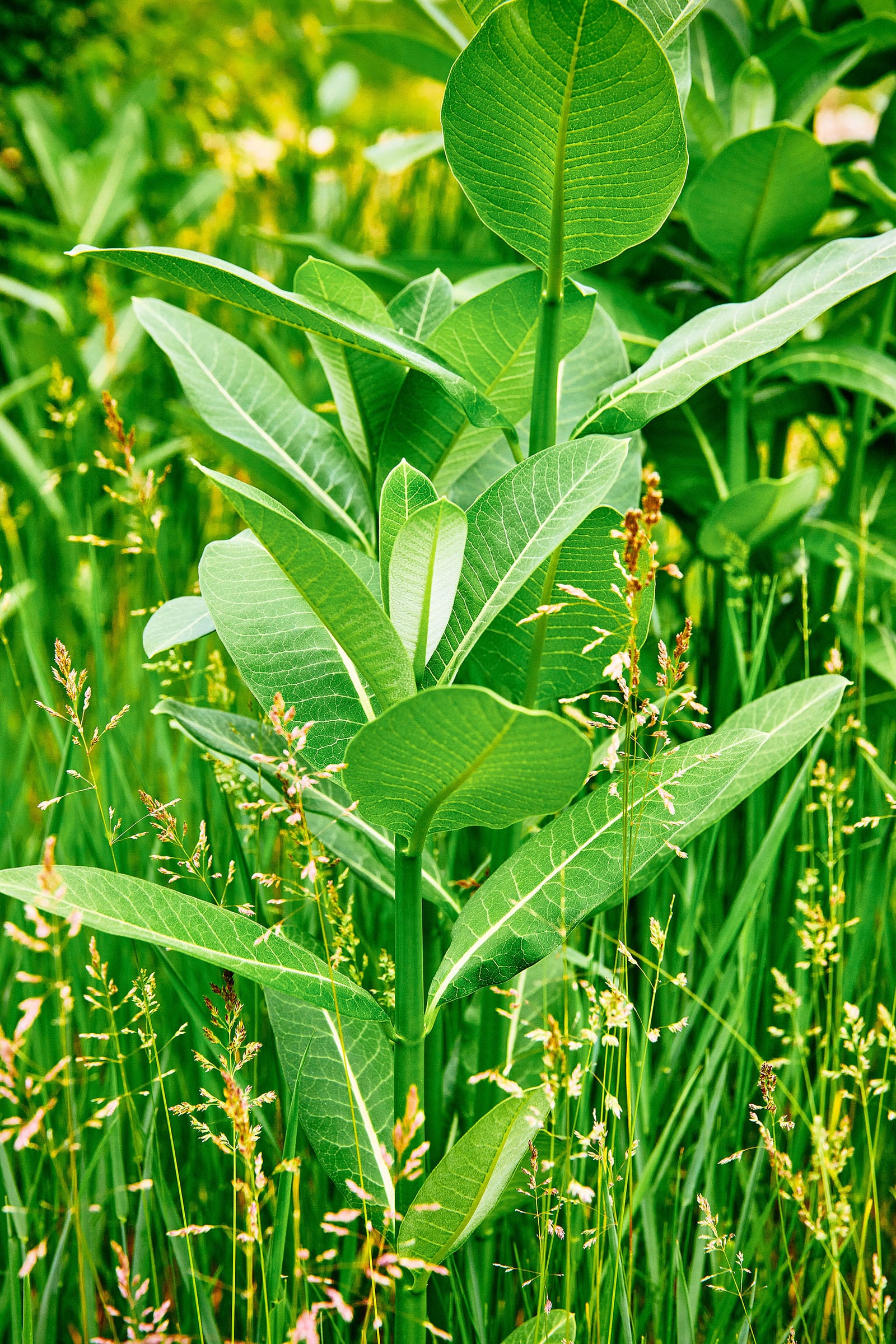
Milkweed isn’t just for the butterflies! This common weed, of which many species are native to the US, is edible to us humans when prepared correctly. Common milkweed (Asclepias syriaca) and swamp milkweed (A. incarnata) in particular are popular with foragers. They’re a frequent sight in (agricultural) fields and among prairie vegetation.
The thing with milkweed is that you do have to cook it, as it’s toxic otherwise. Use young growth: the shoots taste somewhat like asparagus. The flower buds can be pickled, the flowers work well in jellies and teas, and the young seed pods can be boiled or sauteed.
You can grow milkweed in your garden pretty easily. As I describe in my full guide to growing milkweed, it’s a good idea to go for species that are also useful to monarch butterflies; avoid tropical milkweed (Asclepias curassavica).
Where to buy
Milkweed
14. Pigweed amaranth (Amaranthus sp.)

Known as an “ancient grain,” a bit like quinoa, species from the genus Amaranthus (known as amaranth) have been used by humans as food for thousands of years. Amaranth has recently received a new popularity boost and it can now be found at every health food store. It’s usually not cheap!
But did you know you don’t have to pay a premium for a small bag of amaranth? There are plenty of species that are native to North America, as well as a bunch of introduced ones. They grow as weeds in fields, construction sites, and even gardens—completely ignored and ripe for the taking.
You can also grow amaranth yourself in zones 2 to 11. It’s very hardy! (Not to mention heat-tolerant—one of my favorite varieties, edible red leaf amaranth, is a salad green that can be grown all summer long.)
Amaranth seeds are the part most commonly eaten. They can be popped like popcorn, ground into flour, or used in muesli mixes and granola bars. You can pick the seed heads once they start to dry, after which they need to be fully dried and then threshed (to get the seeds out) and winnowed (to separate the chaff).
Aside from the seeds, you can also use amaranth leaves in salads and stir-fries. The stems are edible too, and work well for stir-fries and soups. You could also try pickling them.
15. Pineappleweed (Matricaria discoidea)
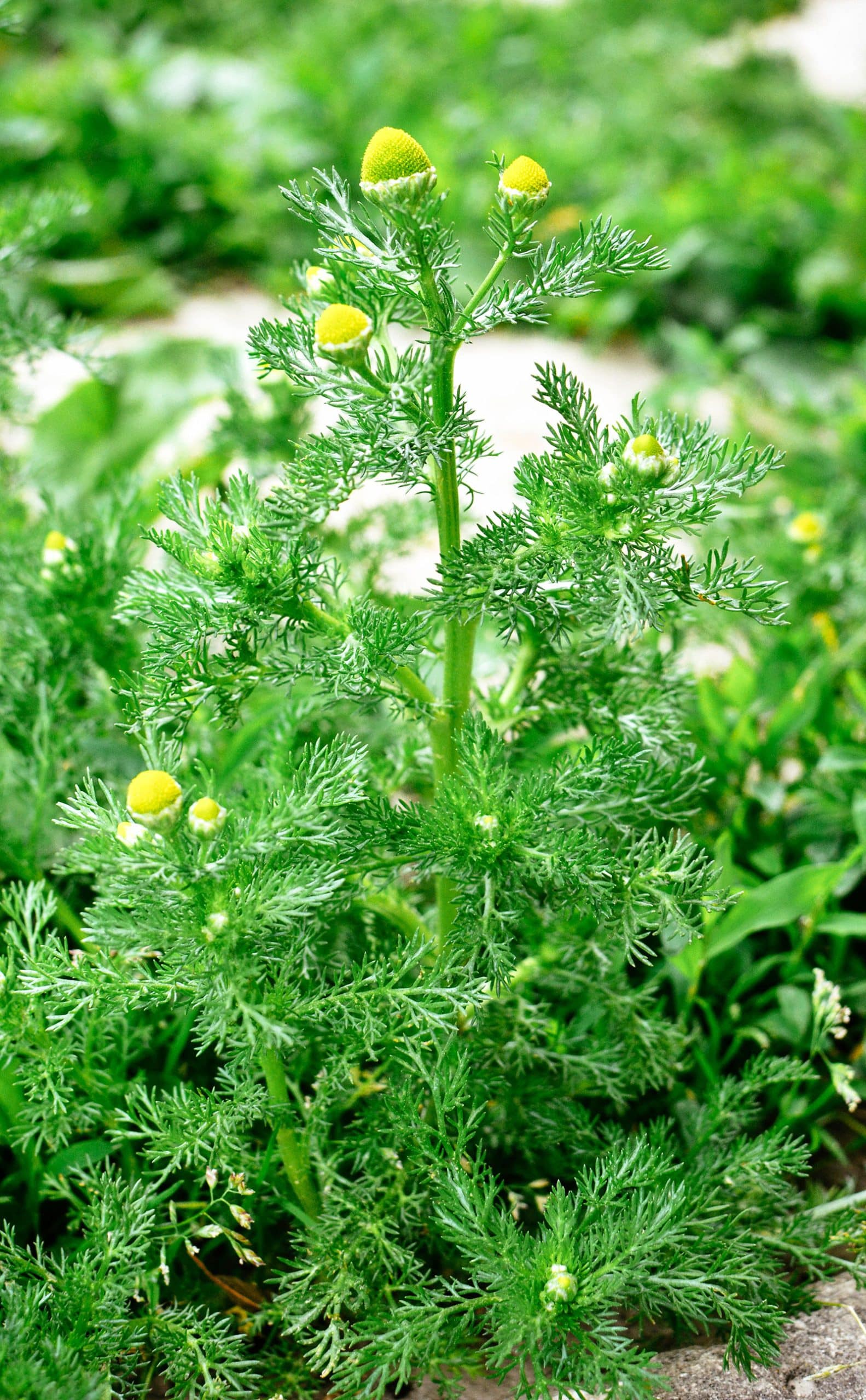
Another excellent “weed” to keep an eye out for while foraging (or even grow yourself in zones 4 to 8) is pineappleweed. Also known as wild chamomile, it’s another native species, found all the way from northern Canada down to the southern USA.
You may have seen pineappleweed before: it tends to pop up in poor, compacted and disturbed soil, usually along rural paths, in fields, and in unmaintained gardens. As the plant’s name suggests, it does actually have a pineapple aroma, mixed with the typical herbal scent and taste of chamomile.
You can use both pineappleweed flowers and leaves to make a soothing herbal tea. The leaves also work well in salads or as a garnish. You could even add them to an herbal butter!
16. Plantain (Plantago sp.)
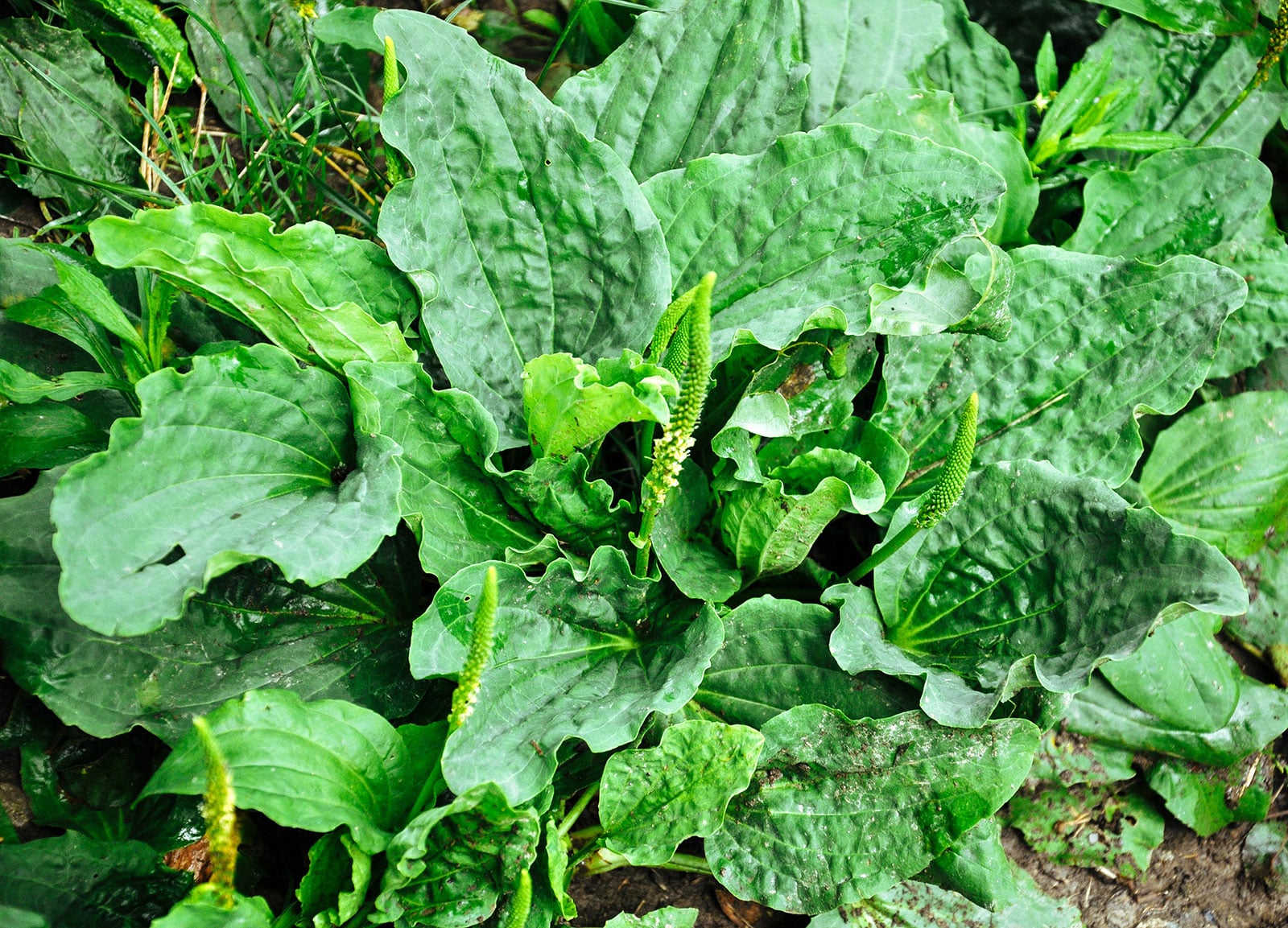
No, we’re not talking about banana’s starchy cousin here. Plantains are weeds of the genus Plantago, which can be found all over the world and contains many species native to North America. You’re sure to have seen it before along roadways and in fields.
Although plantain is pretty unassuming in appearance—low-growing with broad leaves and rattail-like flowers—humans discovered its usefulness a very, very long time ago. The plant has long been used as an herbal remedy, and while not all of its uses in this department have been proven scientifically, it does actually have confirmed medicinal properties.
Plantain seed husks, for example, can help combat constipation. The leaves are antiseptic, anti-inflammatory, and anti-histamine, among other benefits. My mom always made me rub them on my skin if I got into some stinging nettles!
If you can’t find wild plantain in your area, you can grow it in any soil type in zones 3 to 9. Add the slightly bitter leaves to salads or anywhere you’d normally use spinach or kale. You can also separate the seed husks (by means of winnowing) to use as a fiber supplement.
17. Prickly lettuce (Lactuca serriola)
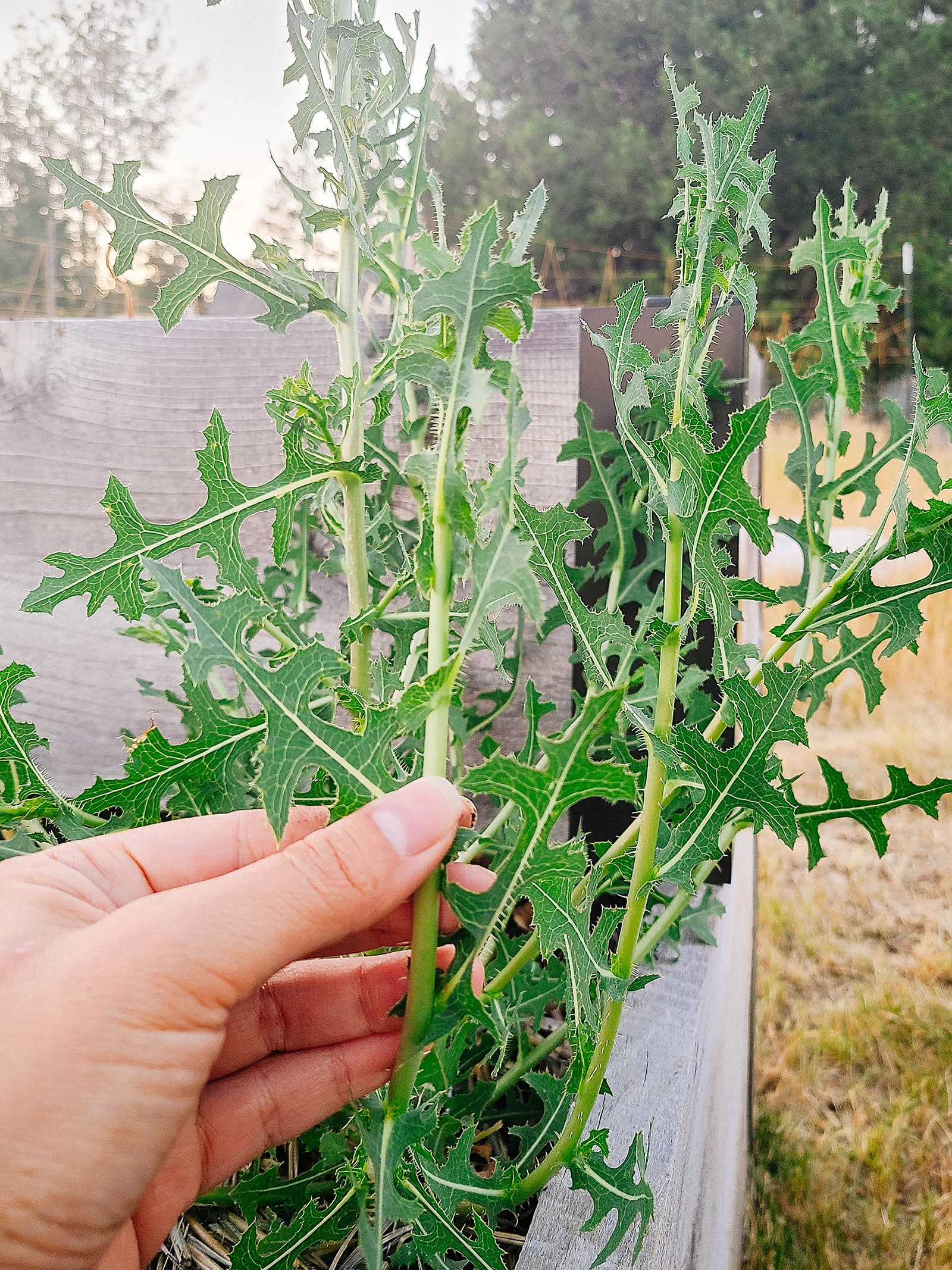
Love the more bitter types of lettuce, or bitter vegetables like radicchio? Prickly lettuce might be right up your alley! This non-native plant is sometimes referred to as the compass plant or wild opium and has become naturalized in the US. Very closely related to cultivated lettuce, it’s common in agricultural fields, along roadsides, and in construction sites.
You’ll notice in this image (compared to the featured image at the top of this article) that the serrations on the leaves are much deeper, though they’re both prickly lettuce plants. My guess is that the more jaggedy plant here received less water.
In my own garden, seeds blew in from somewhere one year and started growing in my raised beds all summer, so this is definitely one type of lettuce that’s super heat-tolerant!
Young prickly lettuce leaves have a mild flavor and can be eaten raw in salads. Older leaves, which tend to be bitter, work well in stews and soups. The flower buds are also edible, but they lean toward the bitter side with the rest of the mature plant. If you have sensitive skin, try to avoid touching the latex that oozes as you pick the leaves, as it can cause mild skin irritation.
If you’d like to grow your own, prickly lettuce should work well between zones 4 to 8. The species doesn’t care much about soil type, but does like plenty of sunlight.
18. Purple dead-nettle (Lamium purpureum)
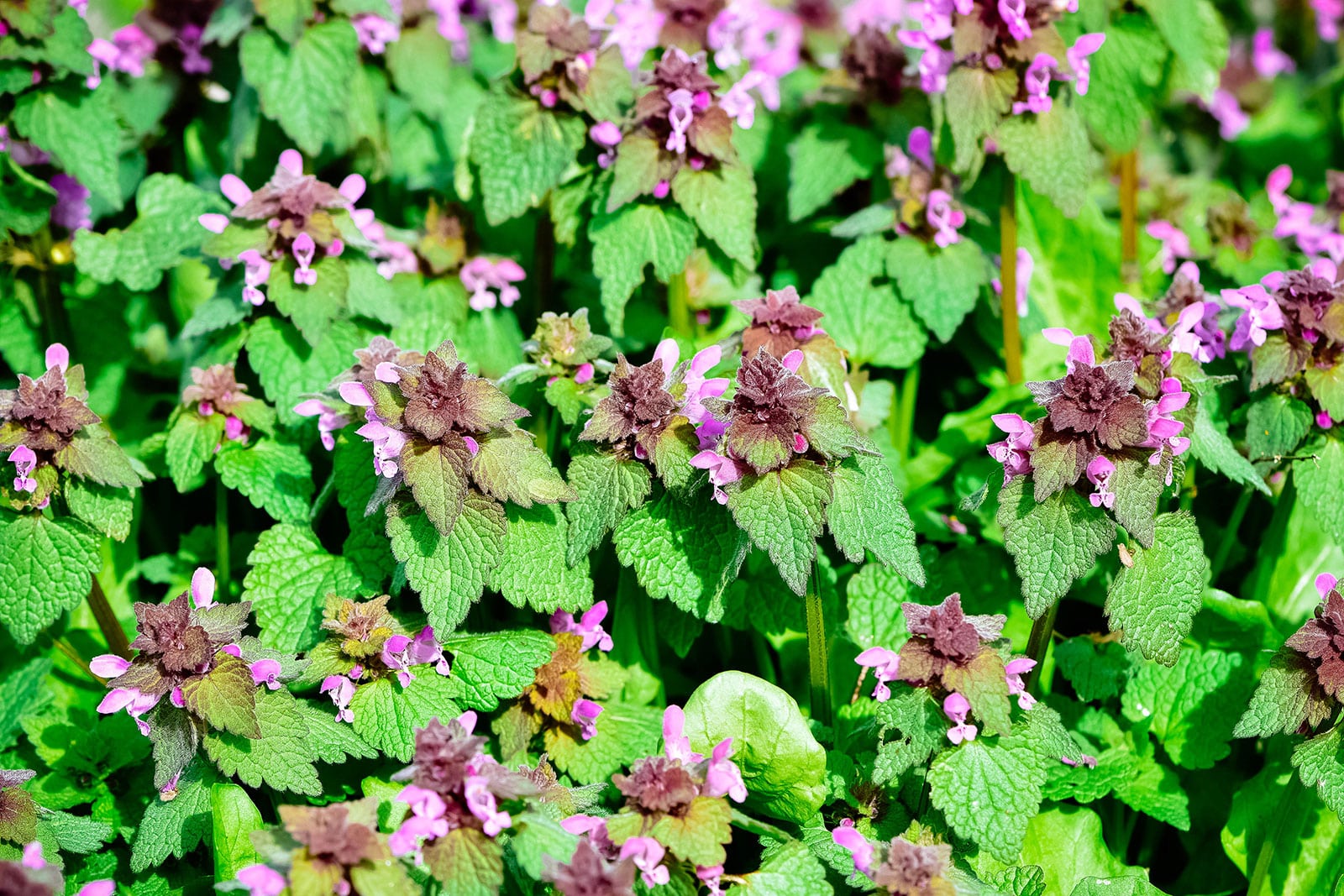
Although the purple dead-nettle is similar in looks to stinging nettles of the genus Urtica, it actually belongs to an entirely different genus. As its name suggests, it doesn’t actually sting, but what it does have in common with stinging nettles (and henbit, which it also looks very similar to) is that it’s edible.
Purple dead-nettle isn’t native to the US. Still, it’s ubiquitous here in gardens and parks, along forest edges, and in fields and meadows. You can recognize it by its little purple flowers, which happen to make a perfect salad garnish. The leaves can also be used in salads, or you can opt to cook them like you would spinach.
If you’d like to grow your own purple dead-nettle for use in cooking and herbal teas, you can do so in USDA zones 4 to 9. The species likes plenty of sun and regular watering.
Did you know?
There’s also a white dead-nettle (Lamium album), which is larger and has cream-colored flowers. You can use it just as you would purple dead-nettle.
19. Purslane (Portulaca oleracea)
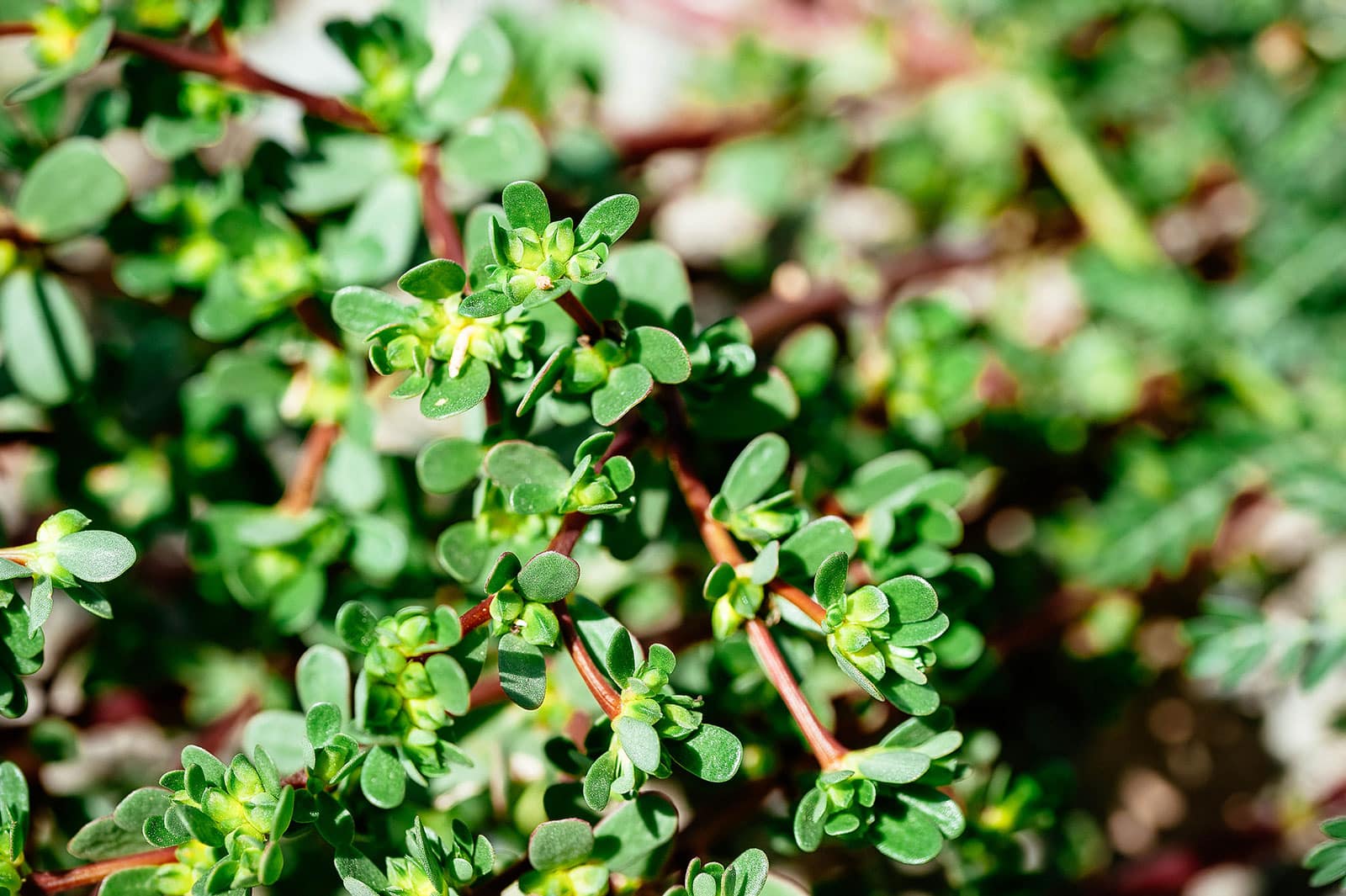
The only succulent plant on this list, purslane is an interesting species. It isn’t thought to be native to the US, but evidence suggests it was naturalized a very long time ago. It’s not clear how purslane ended up in the Americas, but it’s here to stay in gardens and fields, including in areas where the soil is too saline and low-quality for other species.
If you like foraging, you won’t have much trouble finding purslane. It can literally be found growing out of cracks in the sidewalk! Another option is to grow it yourself in a little “edible weeds” garden, which you can do between zones 4 to 11. Being a succulent, purslane is relatively drought-tolerant and likes lots of sun.
This weed has long been used for culinary purposes. The leaves and stems are lightly crunchy and pleasantly salty and sour, making them perfect for eating raw in salads. They can also be used in stir-fries, soups, and stews.
20. Quickweed (Galinsoga parviflora)
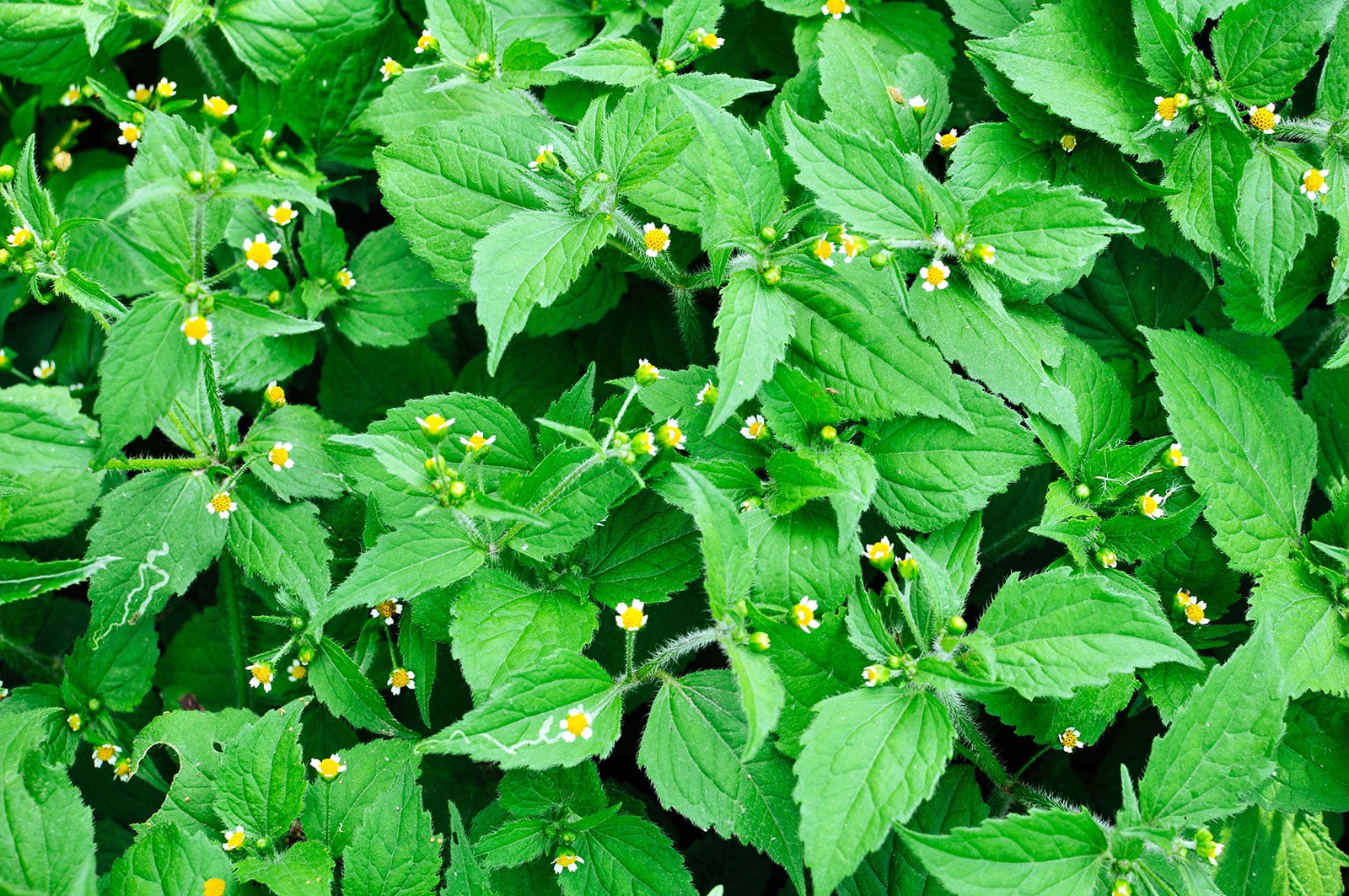
Also known as “gallant soldier,” a rather nice name for a common weed, quickweed is naturally found in Peru but naturalized throughout much of the world. In the US, you’ll find this hardy species between zones 3 to 10. It likes open fields with rich soil, and also pops up in gardens and parks.
In South America, quickweed is relatively widely used, so take a page out of their book if you happen to have some available! The most well-known recipe is a soup called ajiaco, made with chicken, quickweed, and potato. You can also use quickweed leaves and flowers in salads or as a spinach substitute.
Foragers can recognize quickweed by its tiny white flowers, which have a yellow center. If you’d like to grow it yourself, this should be easy, as it’s not picky about soil type and sunlight. Just water regularly; in warm climates, the plant will keep growing year-round.
21. Salsify (Tragopogon porrifolius)

How pretty are the flowers of Tragopogon porrifolius, also known as salsify? They’ll pop up as lavender or yellow blooms, and when they go to seed, resemble giant puffballs similar to dandelions. (Before I knew what these were, I used to blow salsify seeds off their stems when I came across them on hikes—whoops. Maybe I should’ve foraged them instead!)

It’s not surprising this species was introduced to the US from the Mediterranean for its decorative looks, especially considering the fact that it has also long been used as a root vegetable.
Salsify is now naturalized throughout much of North America. If you like to forage, it’s an easy species to spot thanks to those showy blooms. Look for it in fields, meadows, and disturbed areas like construction zones and abandoned gardens. Alternatively, grow it in a sunny spot in your own garden in zones 4 to 8, using well-draining soil.
Young salsify shoots work well in salads, or you can use them for soups and stir-fries. The flowers are also edible, though they don’t have much flavor and are mainly used as a garnish. The root is where it’s really at, though! It tastes mildly like artichoke and can be used as a potato replacement. You can saute it, boil it, or mash it with some butter for a healthy side dish.
22. Sheep sorrel (Rumex acetosella)
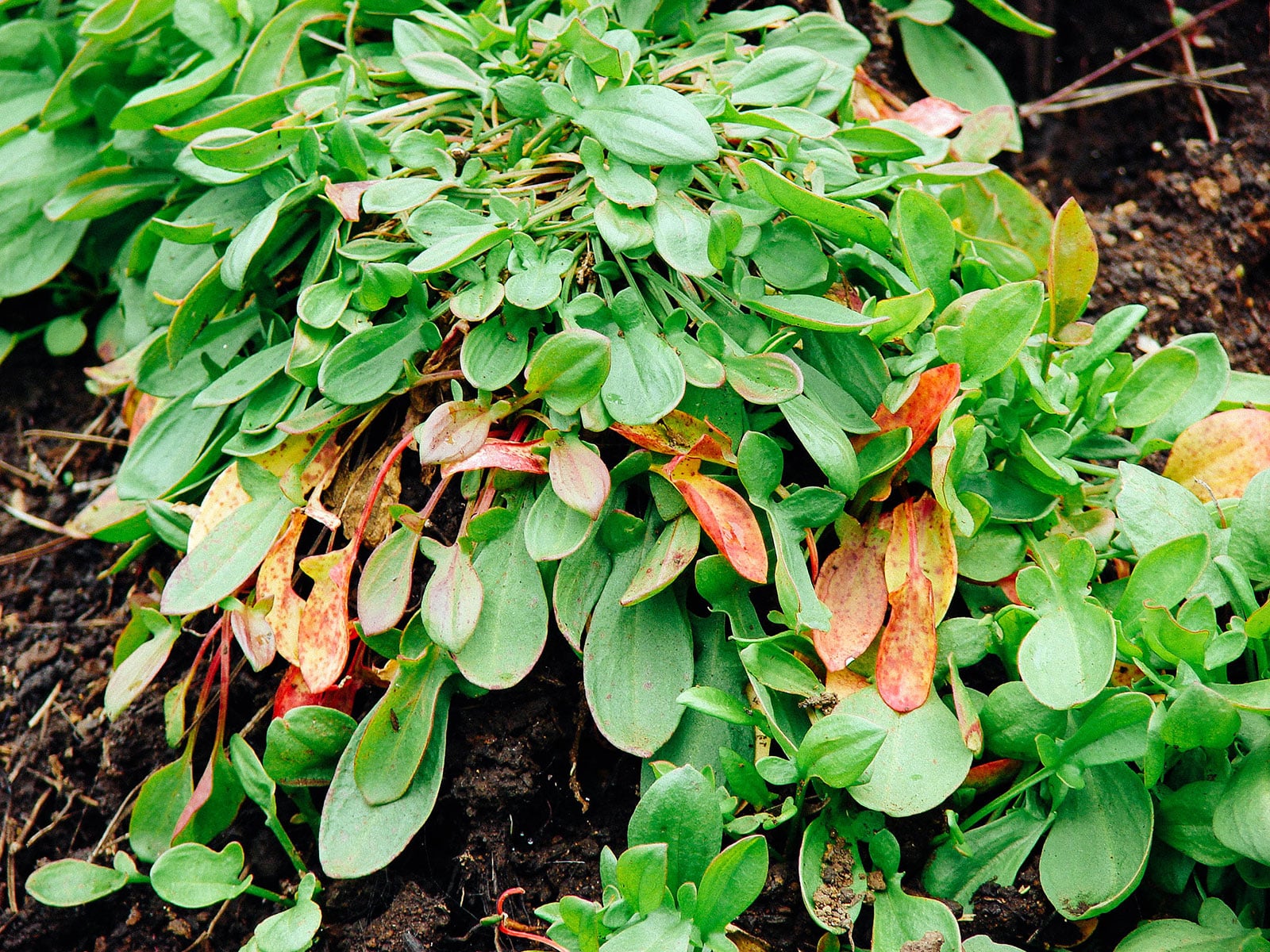
Another Rumex makes the list! Like its aforementioned cousin, curly dock, sheep sorrel is a common weed from Eurasia that has managed to naturalize in North America. It can be eaten in much the same way as curly dock, and the plant—which tastes like lemonade in a leaf—is delectable in salads, soups, and stews.
(If you already grow its cousin, true French sorrel, in your perennial vegetable garden, you’ll recognize the familiar tangy flavor—I love it in this leek and sorrel soup.)
Sheep sorrel can be found in grassland, in open woodland spaces, and anywhere the soil has been disturbed. It particularly likes acidic soils. It’s unfortunately considered a noxious weed in many regions, so if you find some while foraging, pull it out by the root (it can unfortunately grow back from very small root pieces, but hey, it’s better than nothing!).
You can grow sheep sorrel in your herb garden in zones 3 to 9, although it may also pop up in your lawn all by itself. The species likes sandy soil, full sun to half shade, and regular watering.
23. Sow thistle (Sonchus sp.)
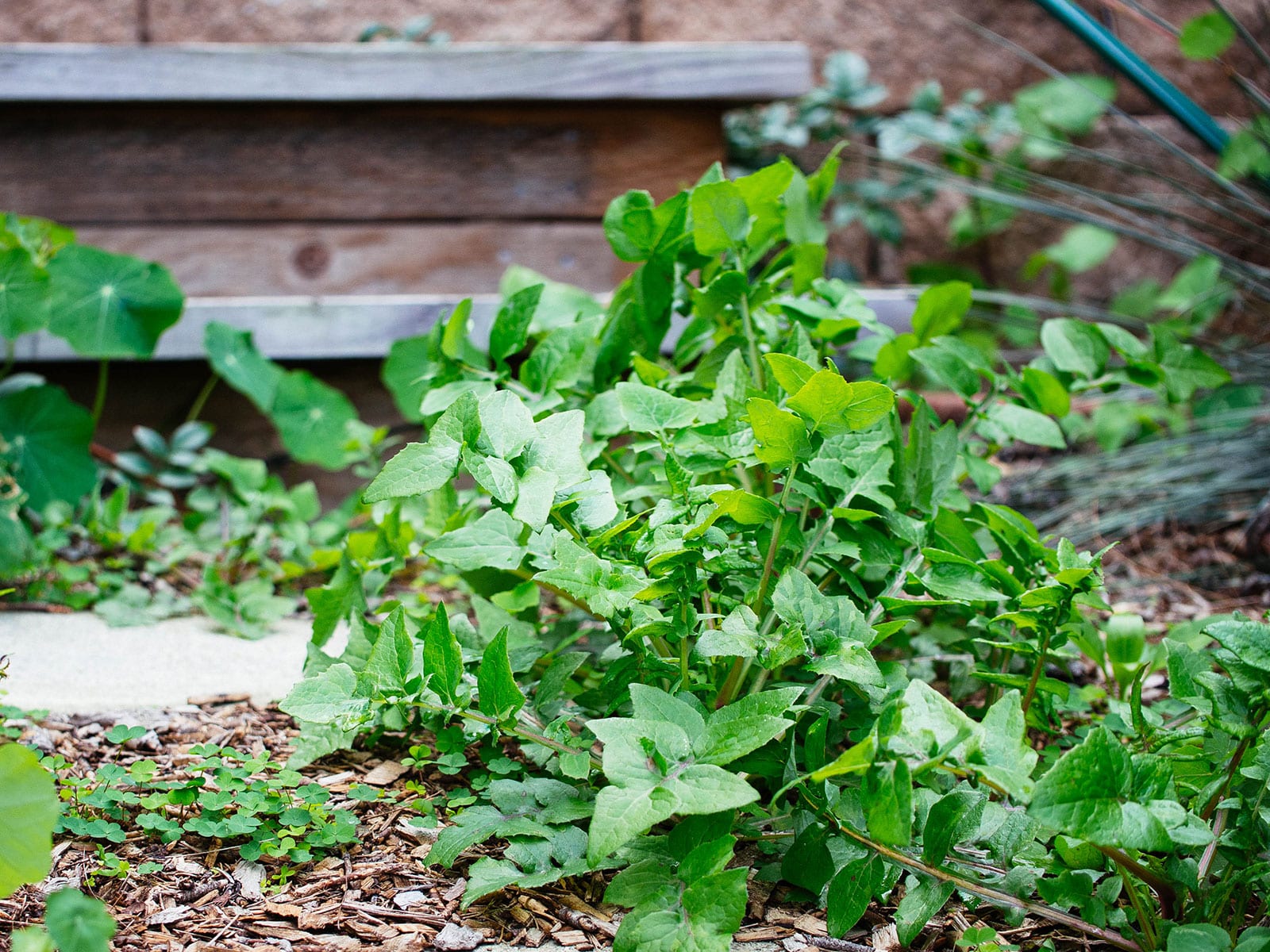
No, you’re not seeing double. Sow thistles really do look a lot like dandelions at first glance, with yellow flowers and serrated leaves that grow in a rosette. They also produce latex, just like dandelions. And they’re edible, too!
You can tell the two apart by looking at the flowers: sow thistle will have multiple flowerheads coming off a stem with small flowers, while dandelions feature just one large flower.

The genus Sonchus is native to Eurasia and parts of Africa, but like most of the plants on this list, it has acquired an almost worldwide distribution. This is bad news for farmers, whose crops can end up completely crowded out by this vigorous plant. Sow thistle produces seed tufts similar to true thistles (and dandelions), so it spreads very easily.
Luckily for us, this noxious weed is also edible. Young leaves taste similar to dandelion greens and work well in salads, while older foliage can be cooked. The inner parts of the stems can be used like chard.
If you’d like to grow sow thistle in your herb garden, you can, but be sure not to let it escape. It will do well in zones 3 to 10 and is not fussy about things like soil type.
24. Stinging nettle (Urtica dioica)
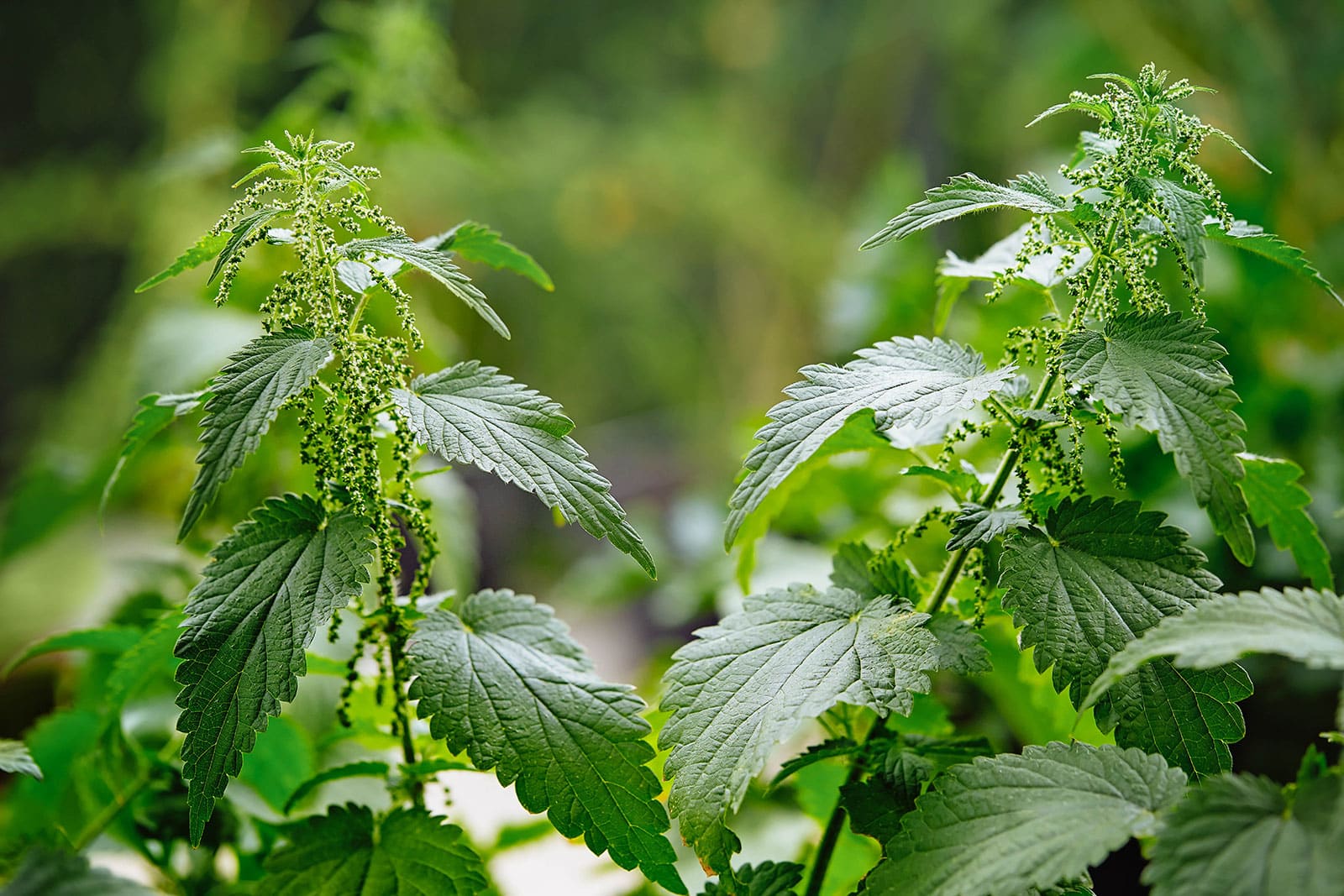
I briefly mentioned this above in the section on dead-nettles: stinging nettles, as pesky as they can be to us gardeners, actually have a wide range of culinary uses. The trick is wearing gloves while picking nettles (if you grab the bottoms of the stems without them, you’ll be nursing a painful hand for days or weeks) and cooking them.
Stinging nettle stems and flowers aren’t commonly eaten, but the leaves make a fantastic spinach substitute. This plant is originally from Europe and also grows in parts of Asia and Africa. Many countries boast traditional dishes that use it as an ingredient:
- Dutch herbal Gouda cheese with stinging nettle
- Greek hortopita, a filo pastry pie with wild greens and feta cheese
- Southeastern European börek, a stuffed pastry pie
- Scandinavian nettle soup
- Nettle tea (traditionally used throughout Europe for its purported medicinal properties)
If nettles aren’t already growing wild in your garden, you can find them near forest edges and streams, as well as in parks, woodland, vacant lots, and pretty much anywhere weeds tend to pop up.
If you’d like to grow nettles yourself for nutritional benefits (they actually contain four times more iron than spinach, plus a host of vitamins), you can do so in rich, lightly moist soil in zones 4 to 9.
25. Storksbill (Erodium circutarium)
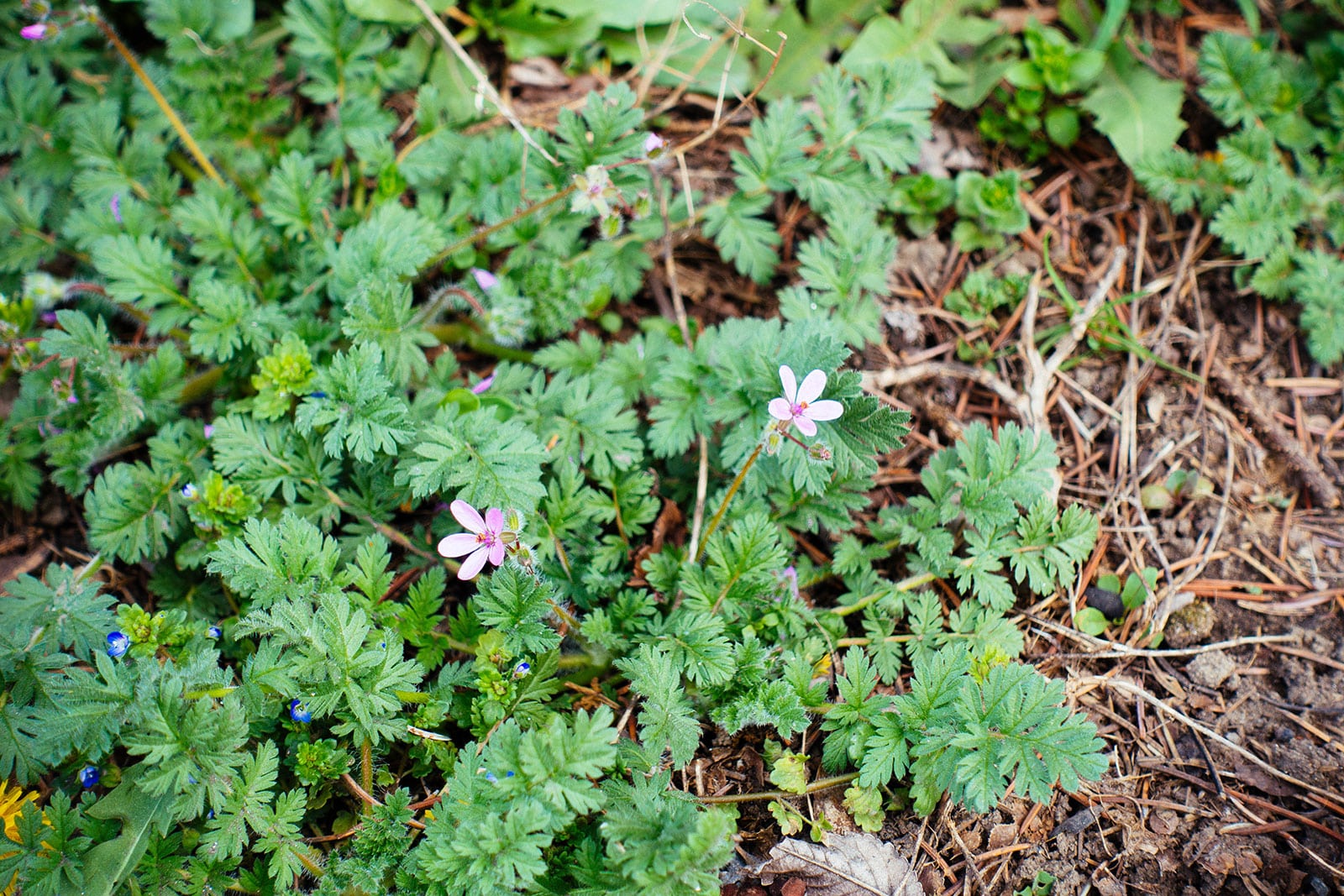
This delicate yet prolific plant (which you’ll sometimes see spelled as stork’s bill, or referred to as filaree or redstem filaree) is native to the Mediterranean area, but found its way into North America via the Spaniards. It gots its name from the shape of the ripening seed pods, which resemble long-beaked storks.
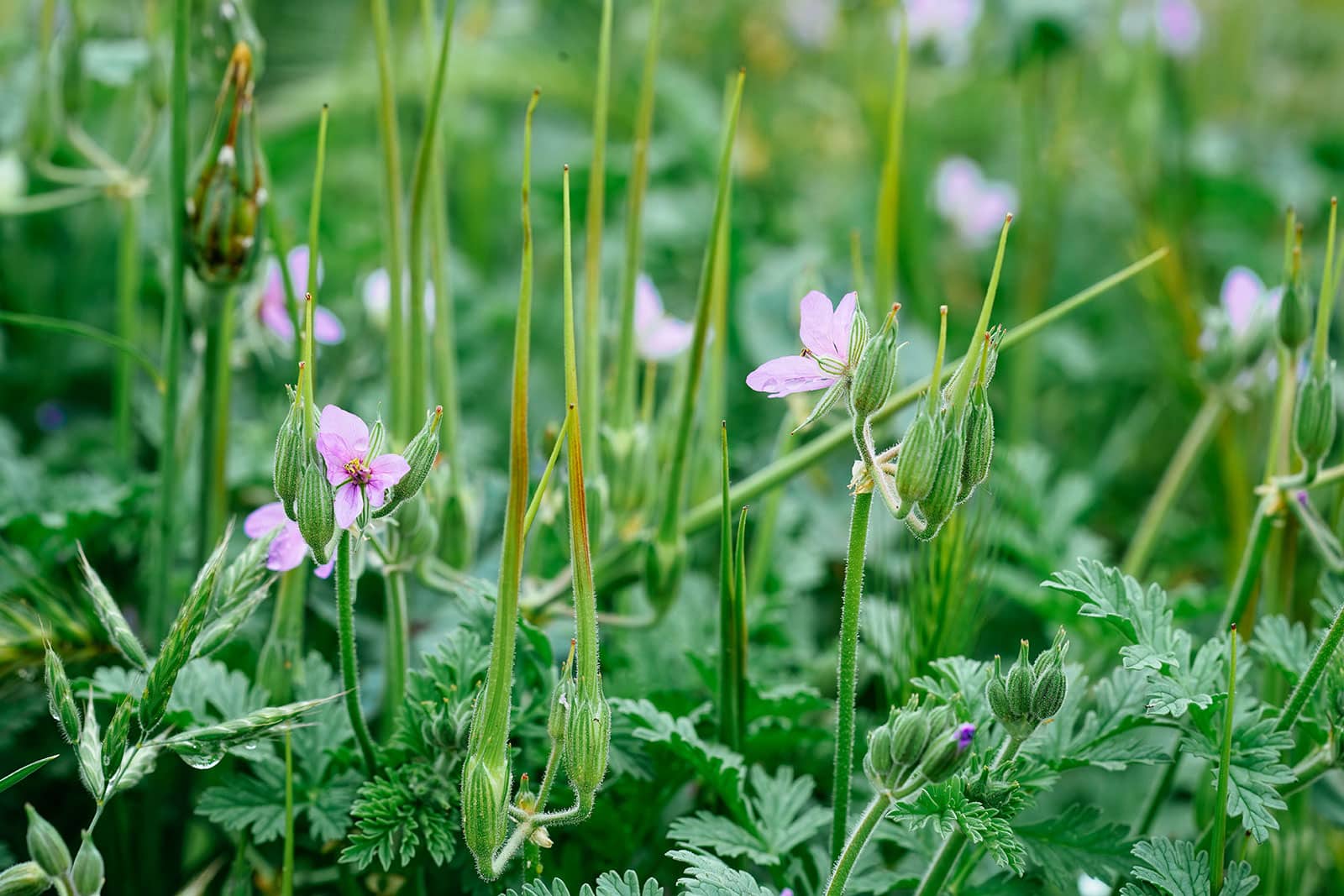
You’ll find storksbill in arid environments like deserts and grasslands and in neglected urban areas like sidewalk cracks, unmaintained road medians, and the south sides of buildings. In certain states like Colorado, it’s considered a noxious weed.
But other people consider this plant to be an herb with medicinal and culinary value. The leaves and roots of storksbill have astringent properties, and the entire plant can be eaten raw or cooked.
The frilly leaves and pink flowers have a somewhat vegetal flavor (kind of like parsley) and the roots have an earthier taste that leans on the sweet side. As with most plants, young and tender is better than old and tough, so you’ll want to pick this weed early.
26. Violet (Viola sp.)
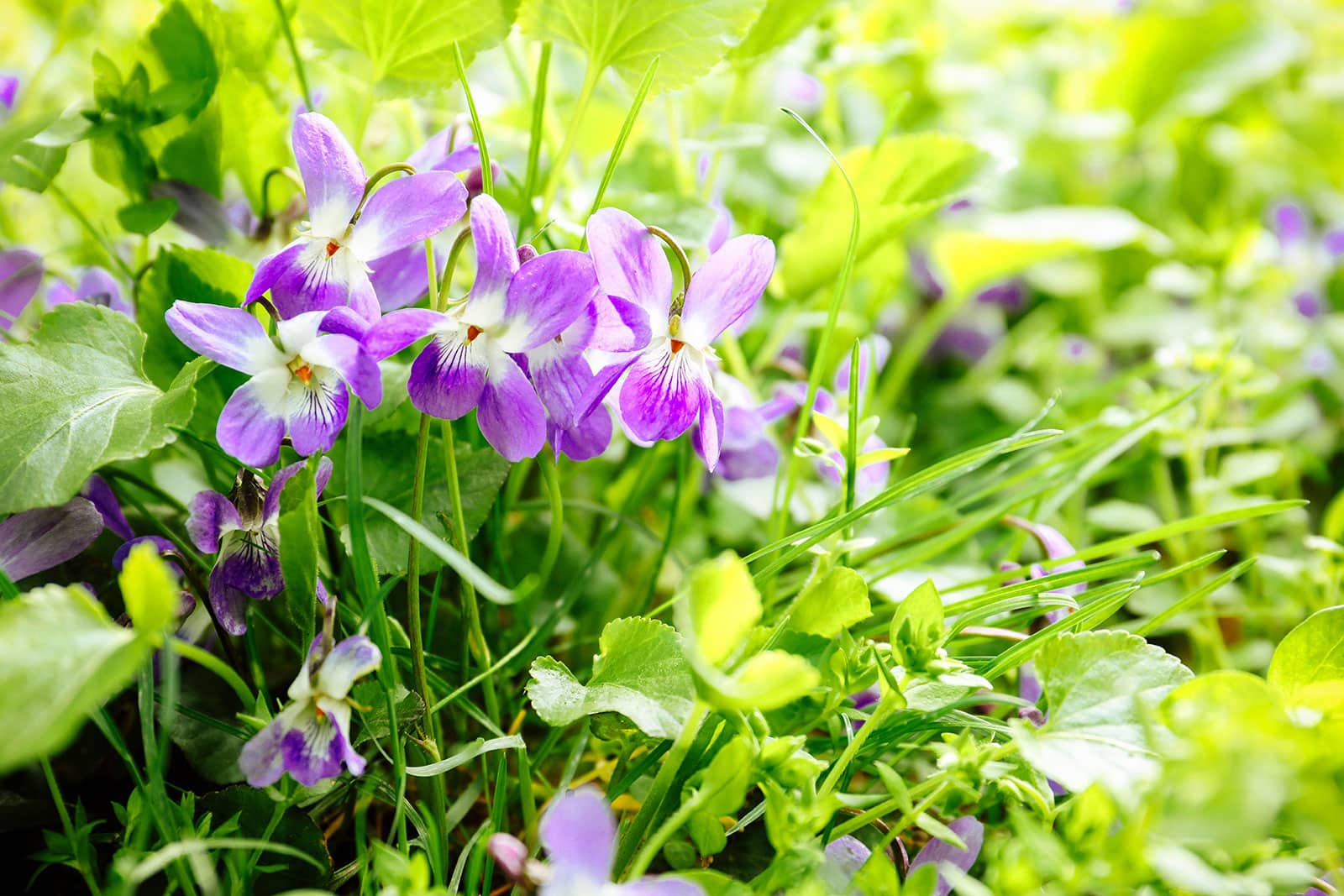
Yep, although violets are popular garden plants, they’re also common weeds. Members of the genus Viola are quite good at self-seeding, making it easy for them to pop up in places where their presence wasn’t originally intended. There are violet species that are native to the US, but you can also come across naturalized non-native species, like the highly popular Viola odorata.
Most species of violet are edible, including the popular garden pansy (which is a hybrid species created by humans). You can forage for them around springtime in damp, shaded woodland, as well as in meadows and fields.
Growing violets yourself should also be easy. You can go for the aforementioned V. odorata, the native blue violet (Viola sororia), or pansies (Viola × wittrockiana, known for their pretty flowers). Blue violets are the hardiest, growing well between zones 3 to 8. The others are best suited to zones 5 and up.
Violets are quite versatile. The sweet flowers are perfect as a salad garnish and also commonly candied. You can even use them to make a beautiful purple violet syrup! The leaves work well anywhere you’d use lettuce or spinach.
Where to buy
Violets
27. Wood sorrel (Oxalis sp.)
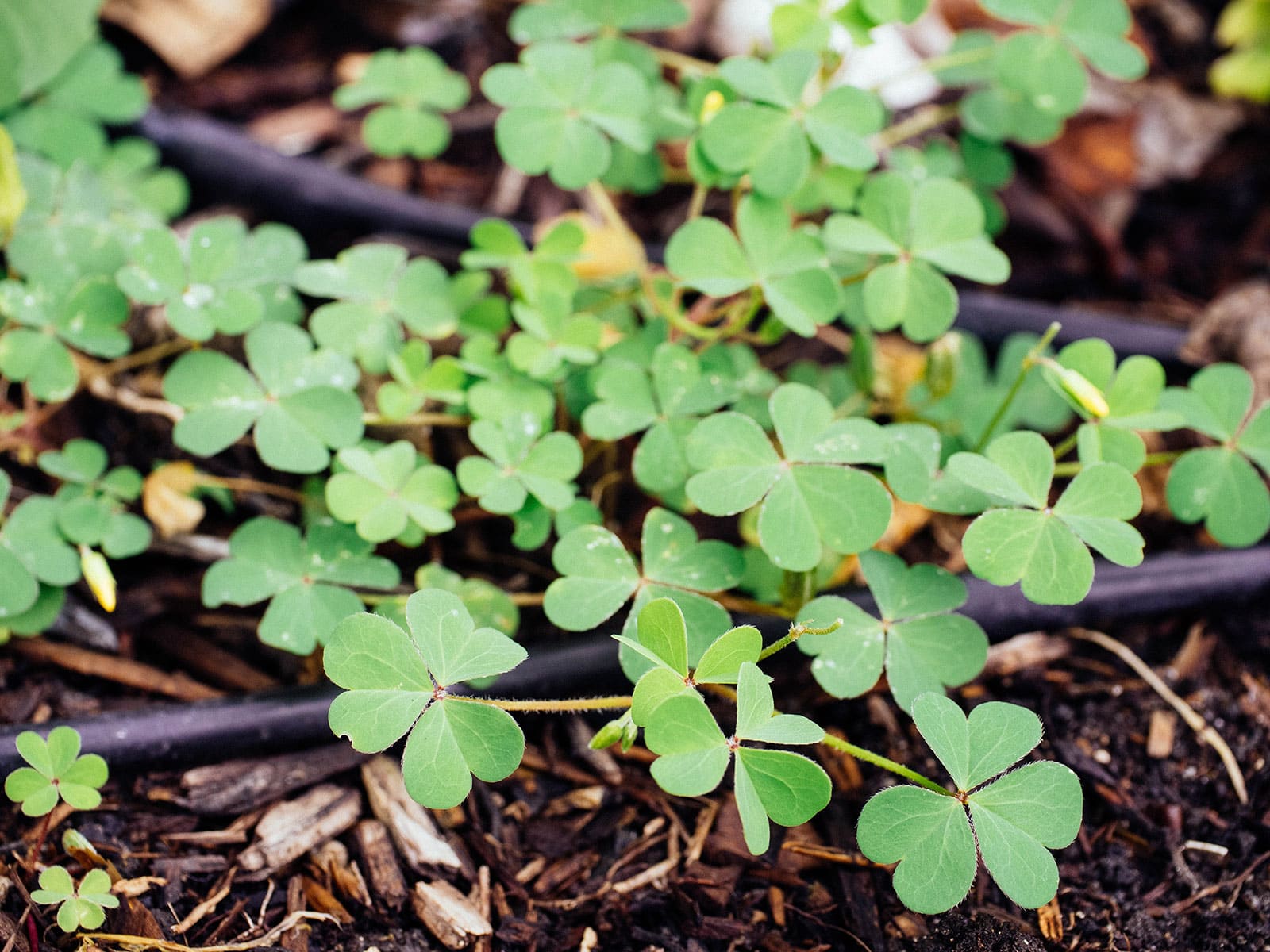
Different species of wood sorrel, of the genus Oxalis, can be found pretty much worldwide. Some are native to the US, and have in fact been a source of food for humans for thousands of years. Many native tribes would consume wood sorrel for different reasons, which is not surprising given how versatile and tasty this plant is.
Often mistaken for clover, you can find different species of wood sorrel growing wild in woodlands and meadows, but they may also pop up as weeds in urban areas, parks, and maybe even your very own garden. They’re popular as potted plants (my favorite is the variety known as purple shamrock), and you can grow many species yourself in zones 4 to 9 or even indoors.
While you shouldn’t overdo it when it comes to wood sorrel leaves due to their high oxalic acid content, their bright, lemony flavor makes them a delicious addition to dishes like salads and soups. (I love munching on them fresh, right out of the garden.)
You can also eat the flowers, and some species have tubers that are worth eating. Called “oca” in countries like Colombia where they are commonly eaten, they can range in flavor from mildly sweet to tangy, and you can use them as you would potatoes.
Did you know?
Wood sorrel is easily confused with clover. Is that a problem? Not really. Although clover tastes very different, it’s also on this list, and you can eat it all the same.
28. Yarrow (Achillea millefolium)
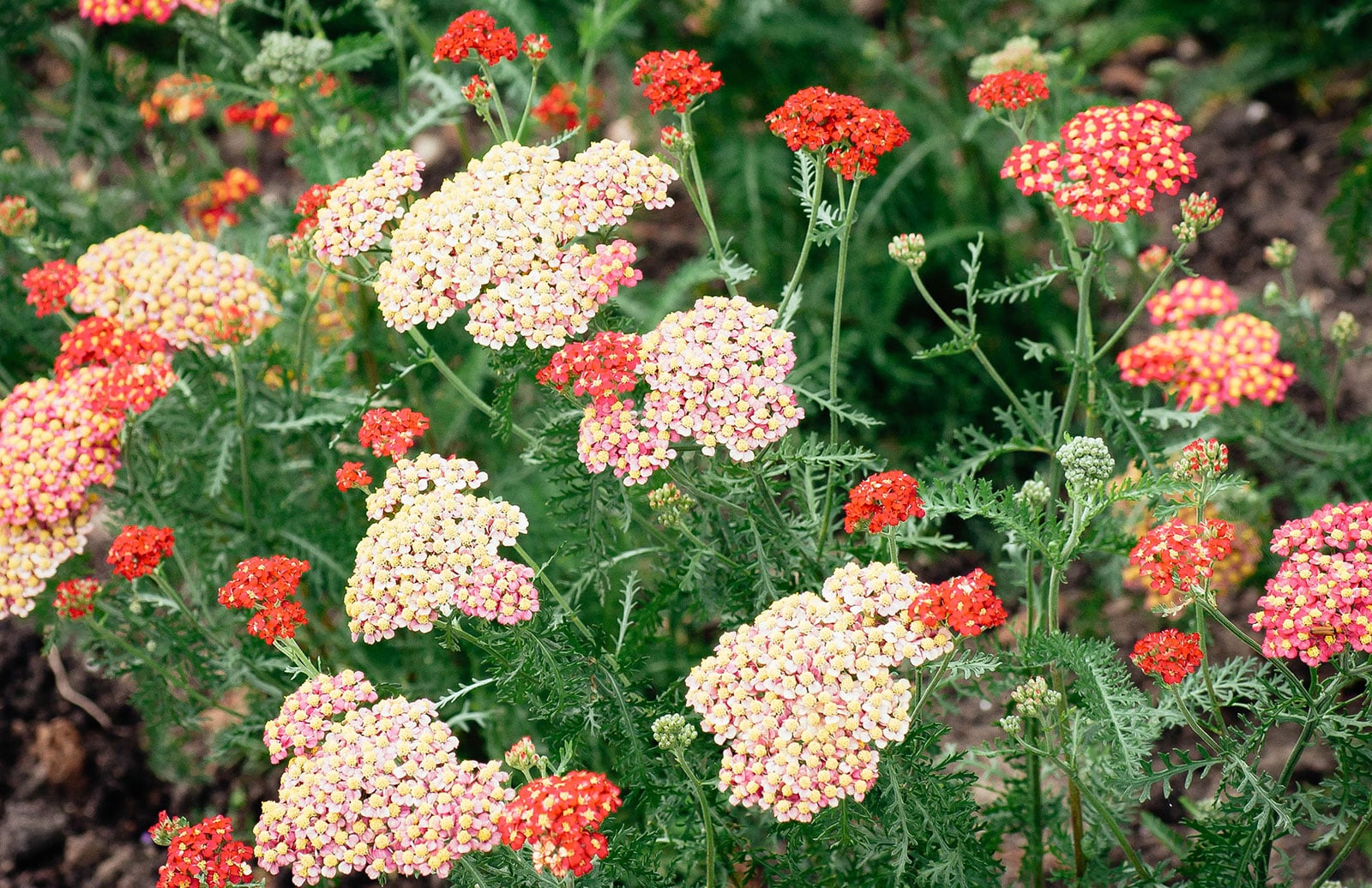
Native to the USA (as well as Europe and much of Asia), yarrow is ubiquitous in meadows and pastures. It also pops up as a weed in disturbed soil, like at construction sites or unmaintained gardens. You can recognize it easily by its many little white, yellow, red, or pink flowers and its feathery foliage.
Young yarrow leaves can be added to salads for a bitter and slightly aniseed-like note, or used to brew tea with. The flowers are also edible and work well in teas, or you can use them as a garnish for salads and baked goods.
If you’d like to grow yarrow yourself, you won’t have any problem getting it to propagate. This hardy plant grows well between zones 3 to 9, likes full sun, and is drought-tolerant once established. In fact, there’s a dwarf version of yarrow that’s often grown as an evergreen ground cover.


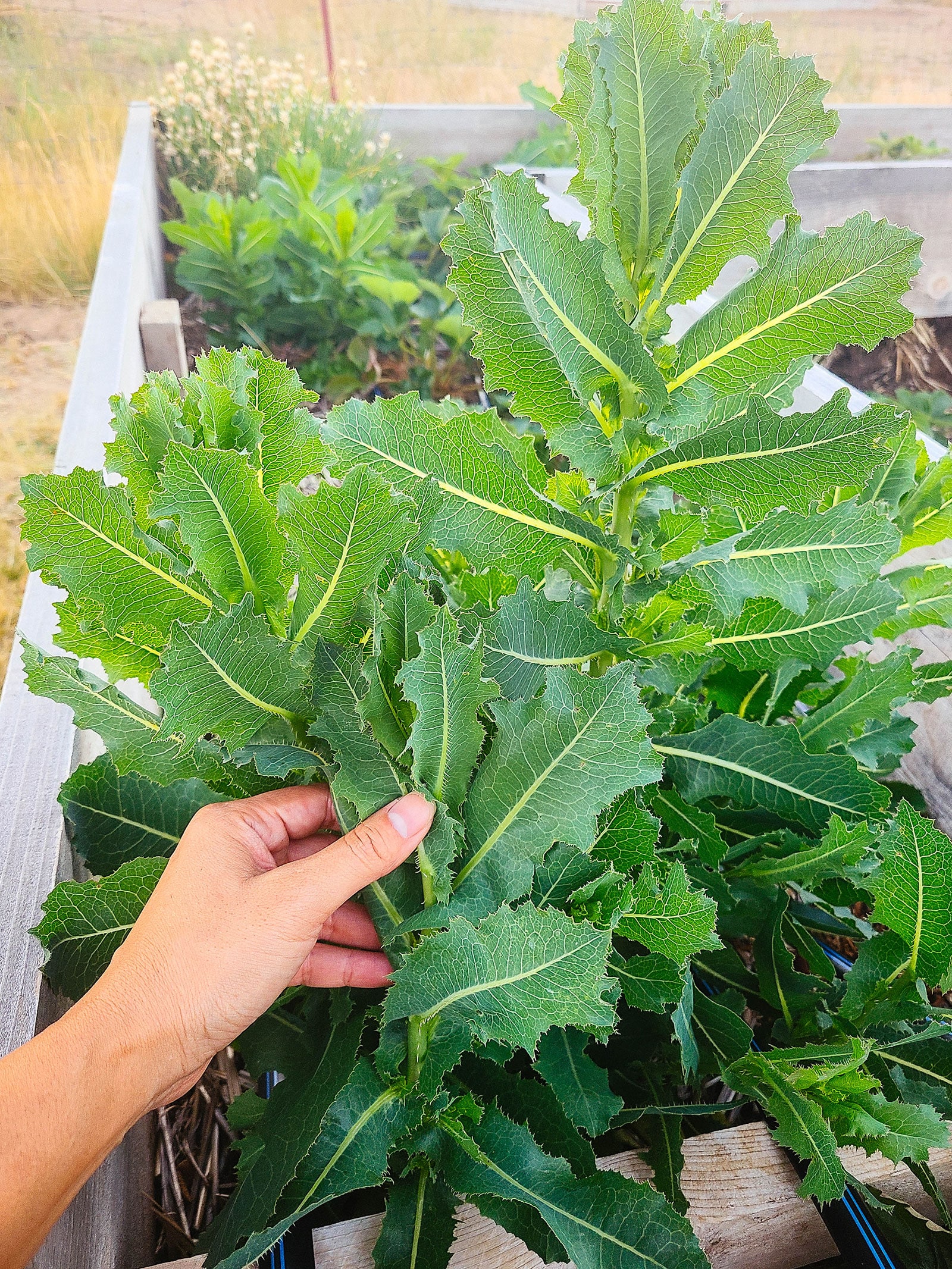
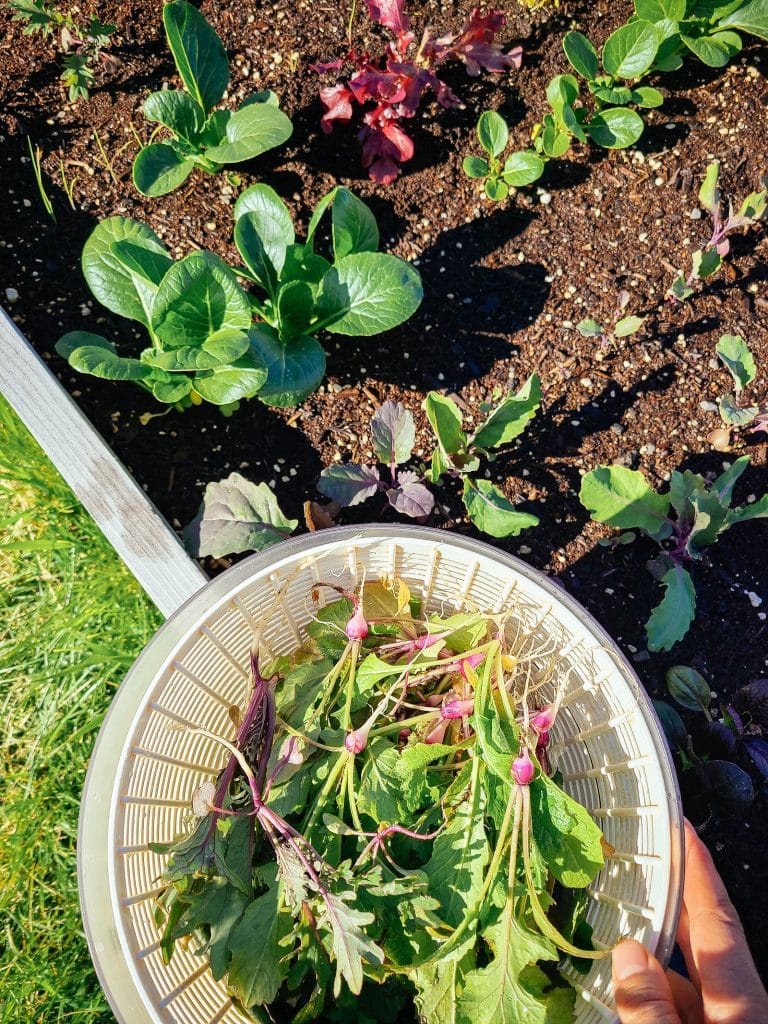
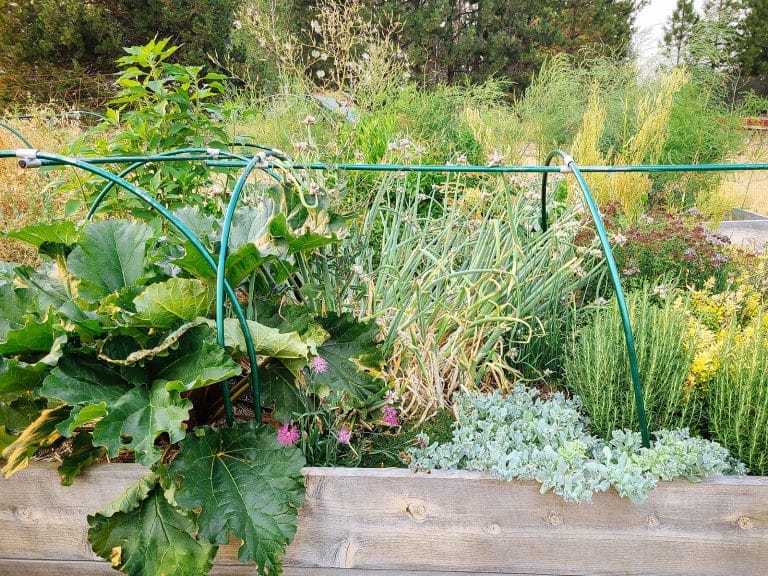
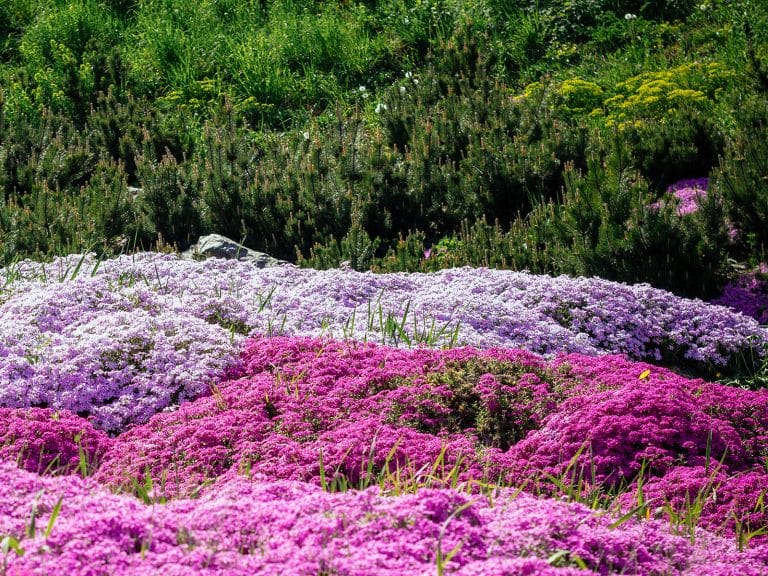
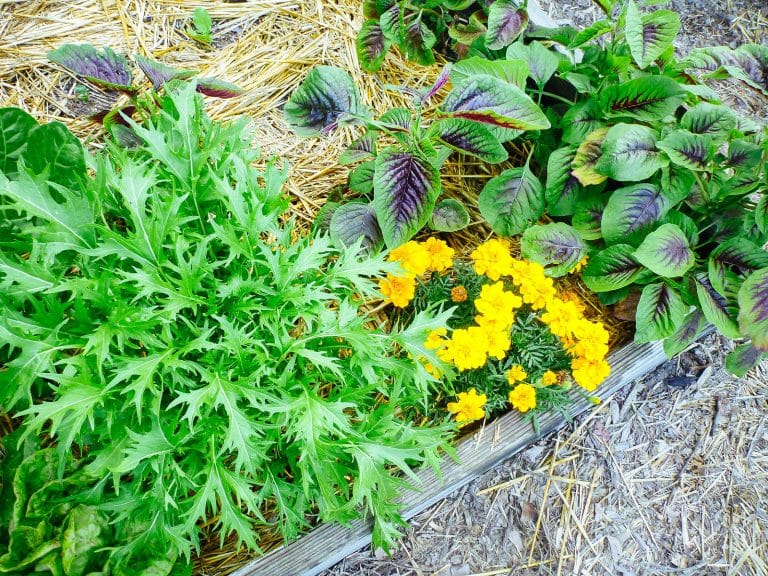






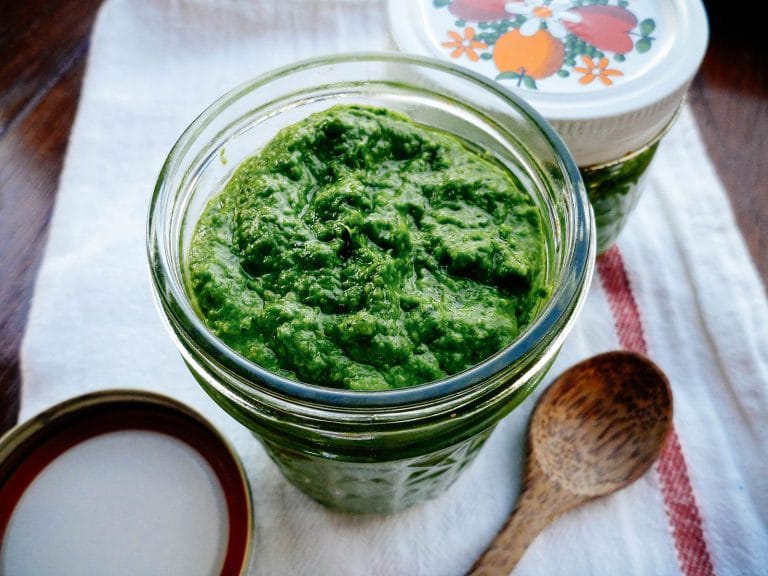


What a great article. Thank you so much. I look forward to reviewing your site as soon as it rains…. I have been only eating about 8 of these. i sure wish I could find a source with each of these 28’s nutritional value. something else to do when it rains. Sun is out and I’m off to the gardens. I live in beautiful Revelstoke BC. Take care.
Thank you for this information I didn’t know that a lot of natural plants we call them weeds..I would love a soft copy of your book?.
I don’t have a physical copy available, but I do have a digital version you can download and print: https://gardenbetty.com/edible-weeds-guide
Thank you for this very helpful article with clear color pics, and uses, all in one place!
Weeds are soil indicators and can actually improve it. Weeds can spread rapidly by seed and/or vegetatively. They are aggressive, fast growing and real survivors. They are variable and can adapt rapidly to hostile conditions. They grow where they will find nourishment and where their living conditions are fulfilled. They live in communities and not as a monoculture. They are in general more resistant to disease than crops.
From a great book: Weeds, How to control and love them by Jo Readman, Doubleday Research Assocation
That was a terrific article about various ” weeds “. We live next to Lake Macatawa. It is a lake that is connected to Lake Michigan by a channel. We have a lot of those weeds around here. Next to our house is a road that dead ends into Lake Mac. It has a beach like area and an area on the side next to our sea wall that has some regular soil. A lot of those weeds grow in that area. I want to print out your article with all those great photos to see all the weeds that I can find. Thank you for putting that together!
You’re welcome Nancy! This article is available as an ebook with all the same great pictures: https://gardenbetty.com/edible-weeds-guide
Super helpful, thank you!
30 years fighting Gout Weed/Bishops Weed (the solid green-leaf plant is more invasive than the invasive variegated leaf.) The leaves are edible, but I still hate it.
I understand completely, edible weeds are kind of a love/hate thing!
I just discovered the edibility of this plant, which I have never been able to eradicate. It is delicious! Raw it’s a bit like parsley (great in tabouli), and cooked is similar to spinach. Now I’m happy to have it!
Do you have a book with these beautiful pictures to help us learn to forage? If so send me the title and ISBN #.
I don’t have a book on this, but it’s definitely something I’ll consider in the future!
Linda: This would make a great little reference book. I am sure I have 60-70% of that stuff growing around my property or near by. Thanks for putting this all together. Laura
You’re welcome Laura. I hadn’t thought of putting this together as a reference book, but maybe I can make that happen in the future!